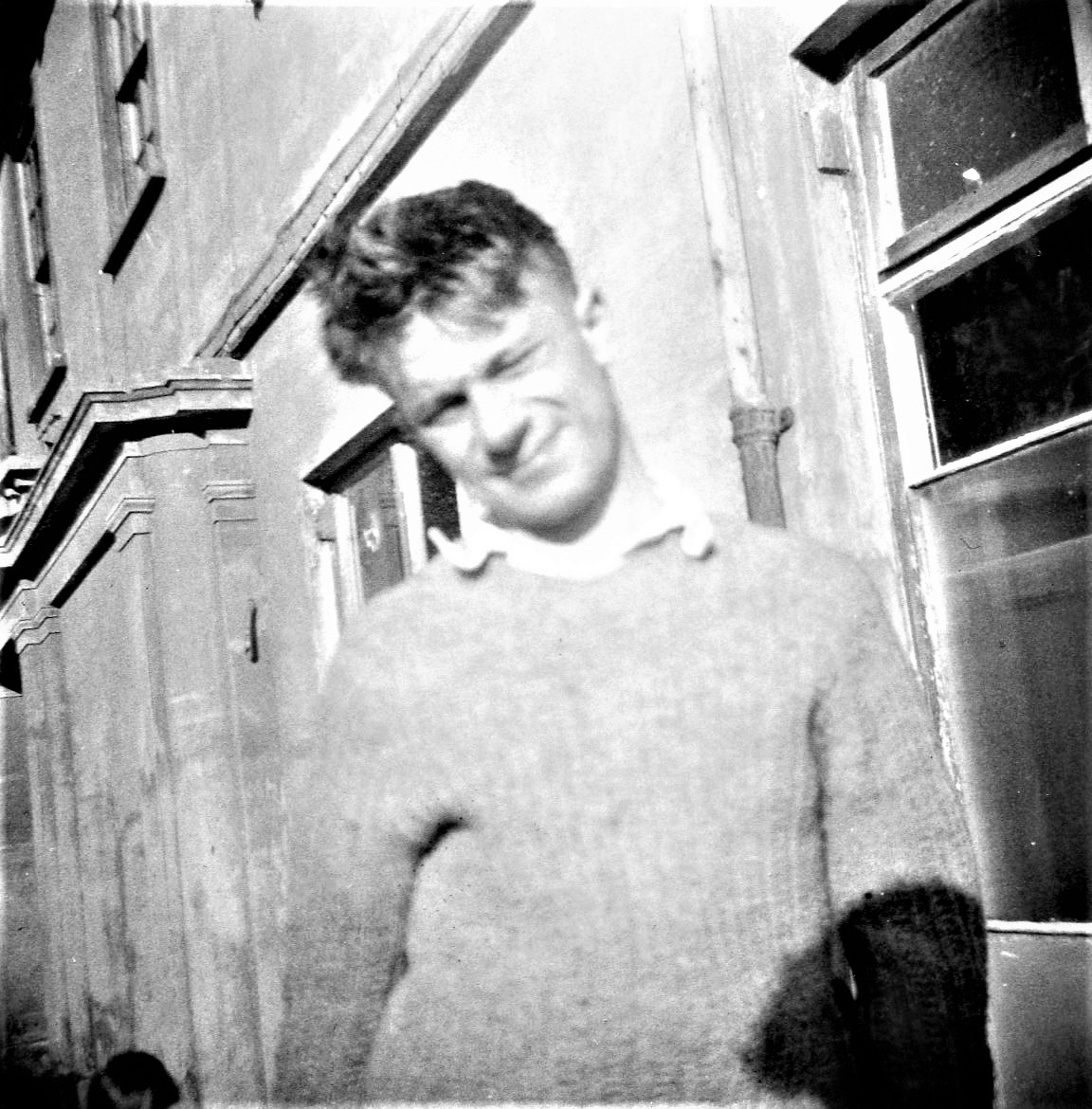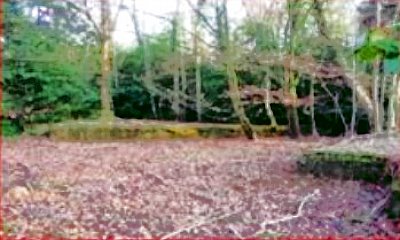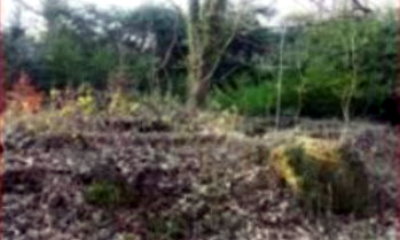YOU ARE ACCESSING THE LCARS COMMAND INTERFACE - ABOUT ADGE'S EARLY DAYS
HOME WAS A NISSEN HUT
Hello, my name is Howard Cutler, here I am four years old, and seeing this old photograph taken at Holmsley South, started me to put up this web page on how we lived.
My memories like time are quickly fading away such as a little piece of very important History of Christchurch, Hampshire in that area, post war that time seems to have been forgotten.
(However. later Christchurch moved into Dorset on April 1, 1974 due to a bill that was passed in parliament)
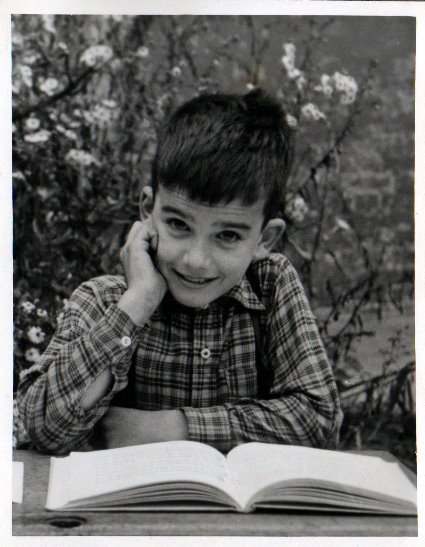
Many books have been written about Christchurch and the surrounding areas, but Holmsley South seems to have been forgotten as if it never existed. It is like a stigma that no one wishes to remember this important period.
The redundant ex RAF Holmsley South post war being the largest of the twelve New Forest wartime airfields played a very big part in peacetime for over fifteen years when the RAF camp accommodation was used as temporary housing by Christchurch Borough Town Council whilst the council embarked on a large post war council house building on the fields at Somerford from Burton Road at Purewell to Somerford Bridge.
In 1947 RAF Holmsley South old communal accommodation buildings on the site were being converted into much needed temporary civilian housing by Christchurch Town Council.
Many corrugated metal skinned Nissen Huts were used to ease the post war housing shortage and the area soon became known as 'Tintown'. Lack of images over this period are very scarce and rare indeed.
The last of the families did not leave until mid 1961. Many of my old school pals do remember living at Holmsley South very well and that age group is now becoming very sparse.
In the December 1946 Christchurch Council took the decision to take over a large part of the airfield for temporary housing purposes and families were quickly installed in some of the Nissen huts.
My father always said this was a terrible place to live with all the hardships all the families had to put up with.
However, I must say that my own memories where only good ones being a young kid.
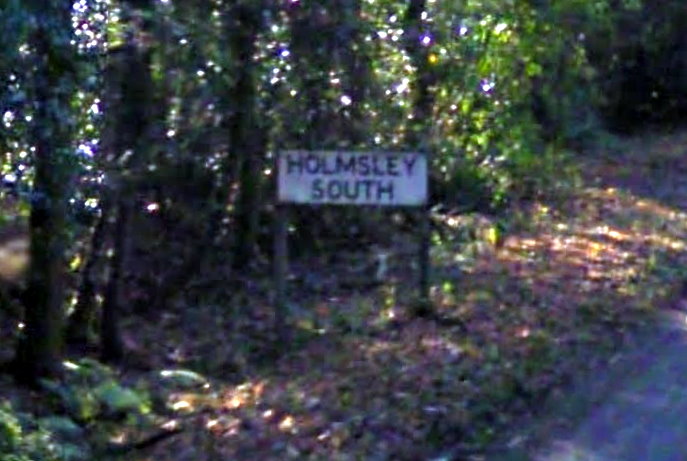
My father did quite a lot of investigative work on Holmsley South as he always had a passion for local history.
When RAF Holmsley South Airfield was built on the land what is now the
east end of Lyndhurst Road, Holmsley South was known to all as 'Plains
Heath' and 'Winkton Common Plantation'.
The domestic sites or RAF Camp as it was known stretched westerly along the Lyndhurst Road for some three quarters of a mile and into Harrow Road.
Nissen Hut Homes Available for Up to 400 People.
When the Ministry of Works
sanctioned the handing over of the camp to the local authority they did
so on the understanding that the Ringwood and Fordingbridge R.D.C.
should be allowed to take over site 9 and the two W.A.A.F. sites 10 and 11 at Harrow Road.
One of the drawbacks with the huts initially, and one which was
proposed to rectify, was that there was no separate forms of cooking
as, in common with all military camps at that time, the layout provides
for communal kitchen feeding. Conversion was quickly undertaken to turn
many large huts into flats and later to take on additional
accommodation sites with smaller Nissen huts with facilities for
cooking.
The initial Christchurch Council main focus of this accommodation, was
situated at 'Beech House' site 3, a large estate on the south side of
Lyndhurst Road. Still there today. See maps below.
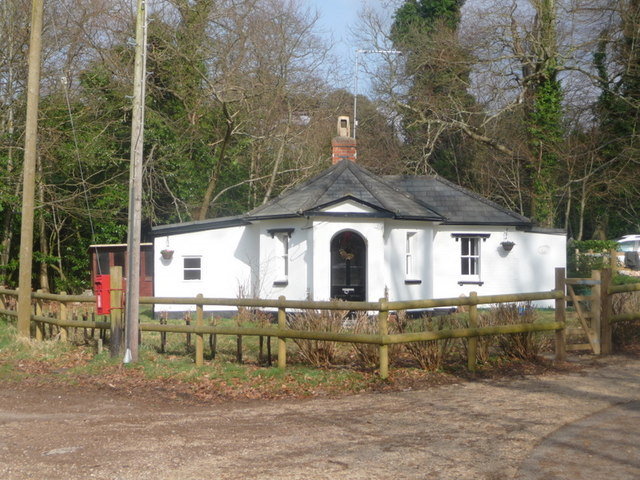
The Lodge leading into Beech House today.
At the age of 9 or 10 together
with my father and with a notepad we cycled back to Holmsley South
which is located about four miles N/E of Christchurch.
We cycled along the A35 towards Lyndhurst, climbing up over Roeshot
Hill until you come to the Cat and Fiddle at Hinton. Turned left into
Ringwood Road towards Bransgore for about one mile you come to a
crossroad at Godwinscroft. Turn right into Lyndhurst Road. The road
starts to climb up hill round a sharp left hand bend and there in front
of you is Holmsley South, a quiet village on the edge of the New Forest
in Hampshire.
Dad had a latest OS Map which made it easier to look around especially
Site 8 where we used to live Nissen Hut 23. Here is an old copy of that map which has
been taken off the web:

Highlighted on this map in red at the time this map was produced, it still shows where all the accommodation Huts are located which ties in well with the ministry record site plan below.
This area from 'Winkton Post'
along Lyndhurst Road to 'Godwinscroft' and Harrow Road from Lyndhurst
Road down to Ringwood Road was all part of Bransgore at that time.
My father could not find any references to Holmsley South prior to 1942
and it was only known as Holmsley which is located another mile to the
east.
Even in 1959 traveling along the Lyndhurst Road and Harrow Road on
bikes you could still see many Nissen huts still occupied from the road
even though rhododendron bushes where some eighteen to twenty feet high
all along the roads which flowered with purple flowers in May/June.
So we must assume that the name Holmsley South was given to the area as only an Identification for all Military purposes by the Ministry of War.
Accommodation Areas
The RAF camp accommodation was made up of three main areas, the largest being at Beech House shown here. Note the verandah roofed platform along the outside of a house, level with the ground floor.
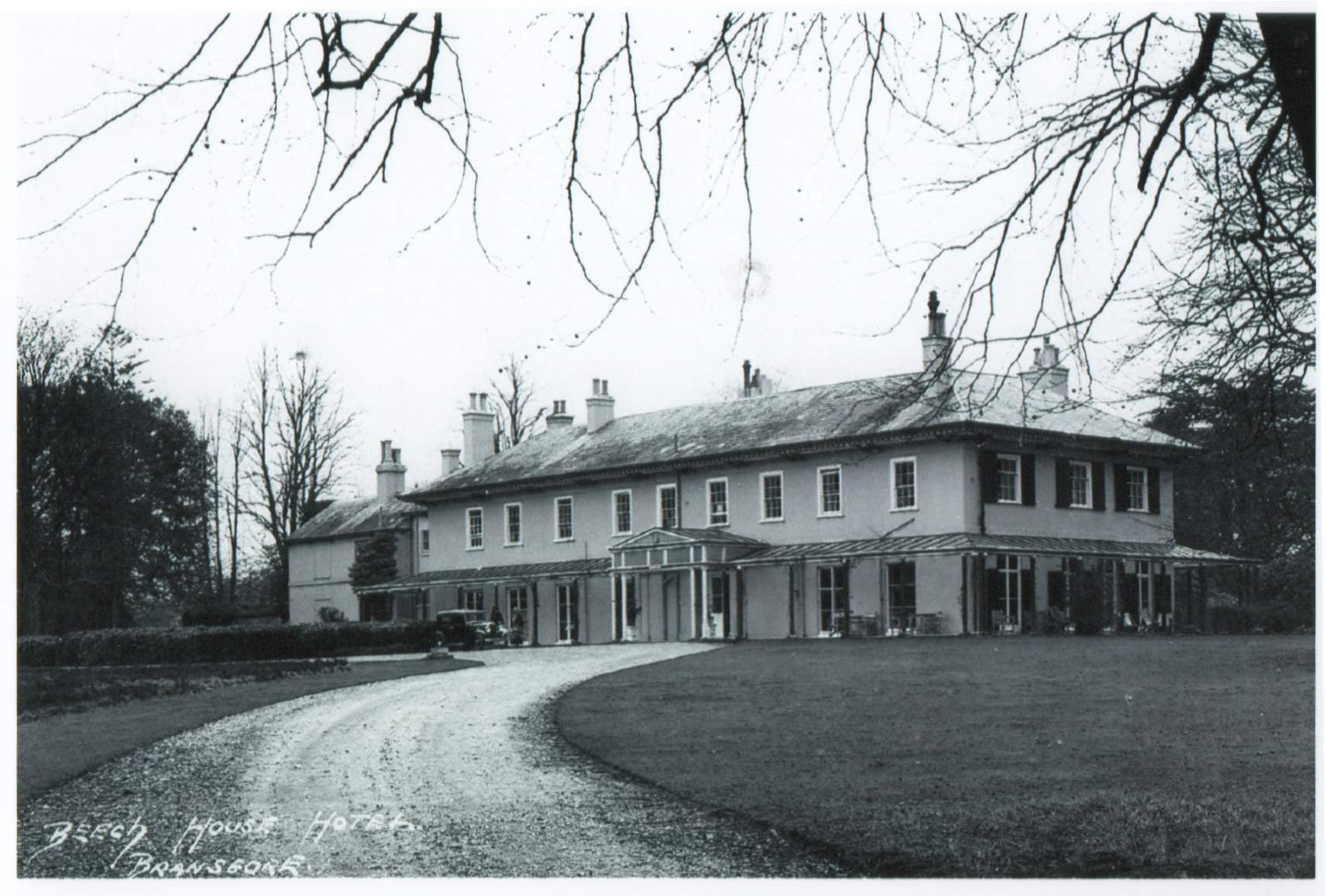 |
Just Prior before the RAF converted to their Officers Mess in 1939.
|
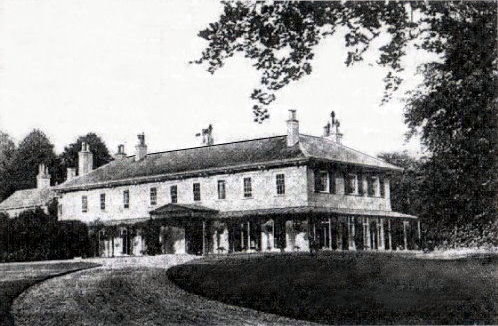 |
Sent to me by Pat Simmons. |
Beech House as shown here by 1960 was in a state of disrepair, the lead on the roof was generally plundered by thieves and sold as scrap and eventually the house was demolished in 1962.
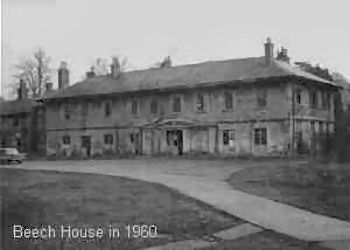 |
By Bransgore Parish |
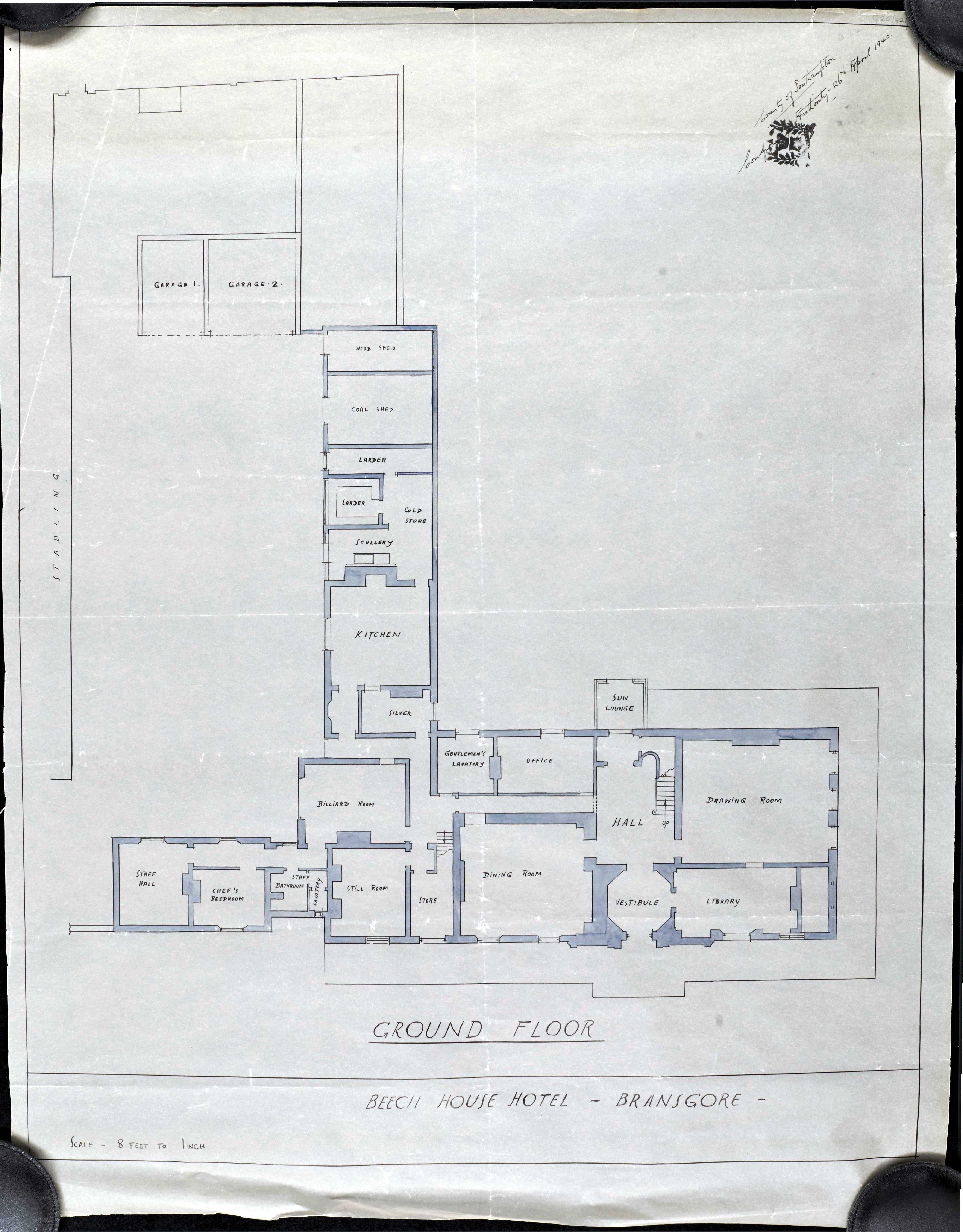 |
Hamshire County Records |
| Equiries with Hampshire Record Office has revealed even more plans here: | |
Although Beech House was the focal, with the main facilities at the Communal site, the following snippets, a photo and area information sheets are indeed interesting facts.
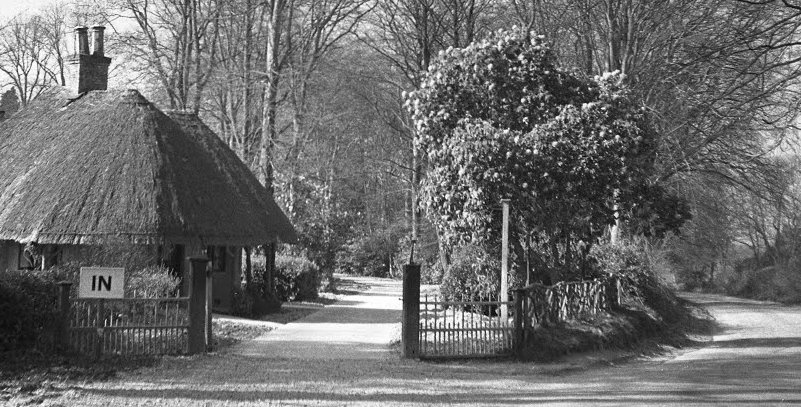 |
Sent by Colin Smedley |
| The entrance to Beech House. (It was RAF Holmsley South Officer's Station Mess) | |
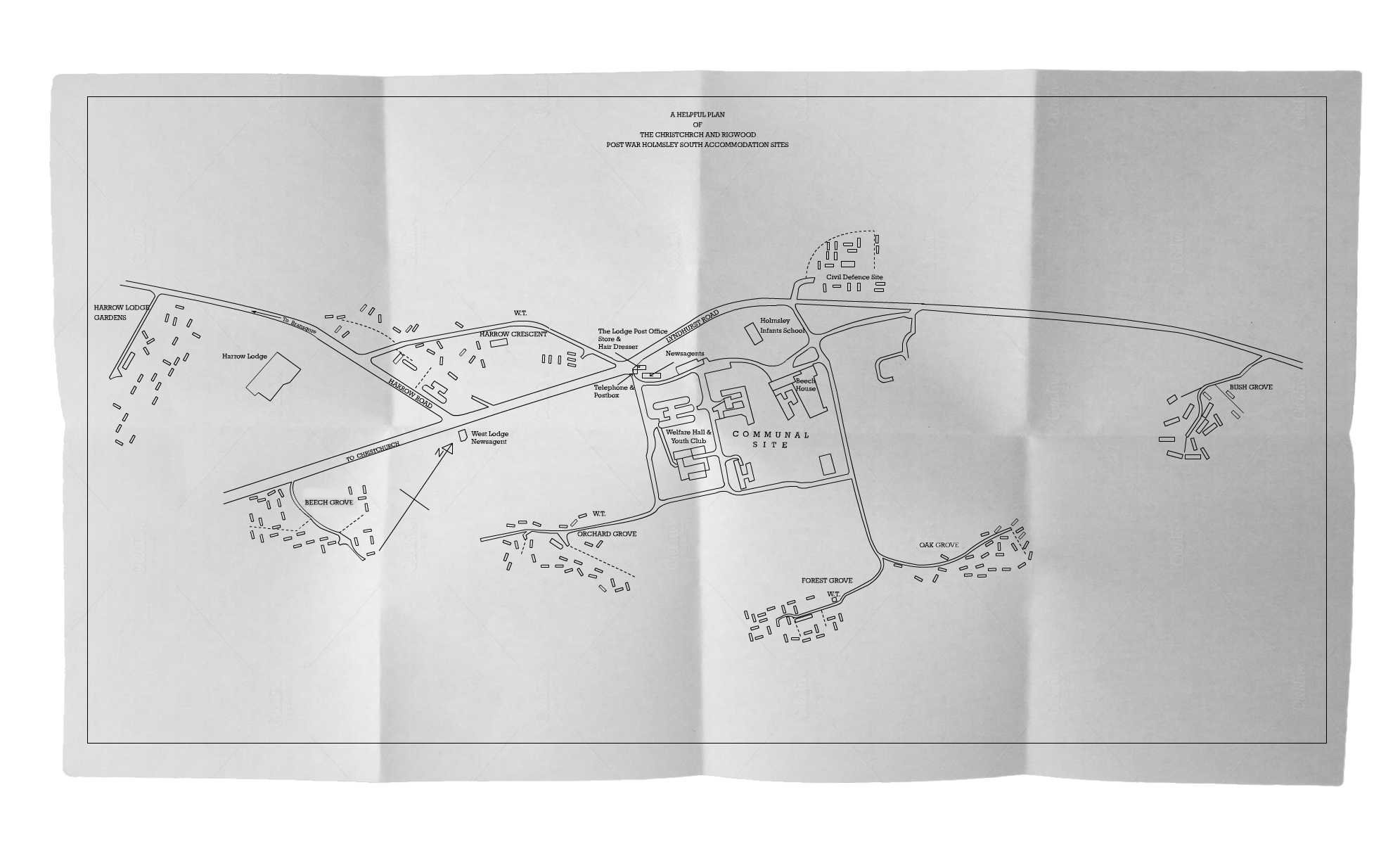
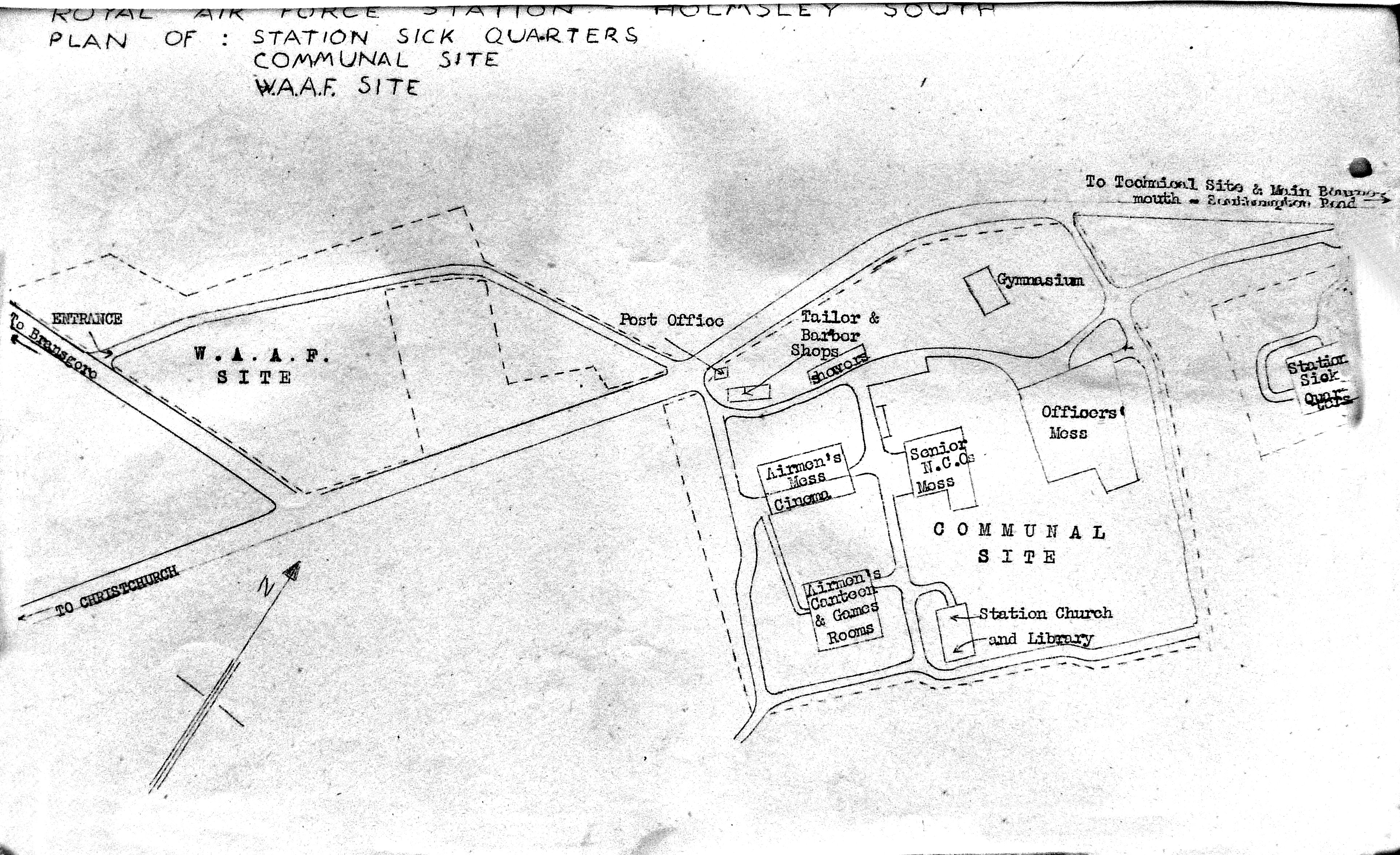
The above was kindly sent to me by Richard Drew author of the Atlantikwall Wall site. Here.
Beech House was a charming old
country mansion which during the war the RAF had used it as their
Officers Mess, and post war it was later converted to flats by
Christchurch Council. On the ground floor we used to have our school
dinners in one of the rooms.
Two smaller areas were on the North side of Lyndhurst Road opposite Beech House on the corner of Harrow Road.
This main site was originally the W.A.A.F. quarters on the right hand
side of Harrow Road, and on the left hand side behind Harrow Lodge was
a smaller site.

Reproduced with permission of the RAF Museum
As seen on this ministry record site plan, the area was divided into smaller sites. At Beech House was pathways to Sites 3,4,5,6,7 and 8.
On the right hand corner of Harrow Road which I will call Harrow Farm area as it stretched down Harrow Road to the boundary with Harrow Farm was 10 and 11 sites.
On the left hand side behind Harrow Lodge was number 9 site. Ringwood Council responsibility at the time for these three sites.
The sewage disposal site which served all the sites was in a field in front of Harrow Farm near the boundary with Harrow Road.
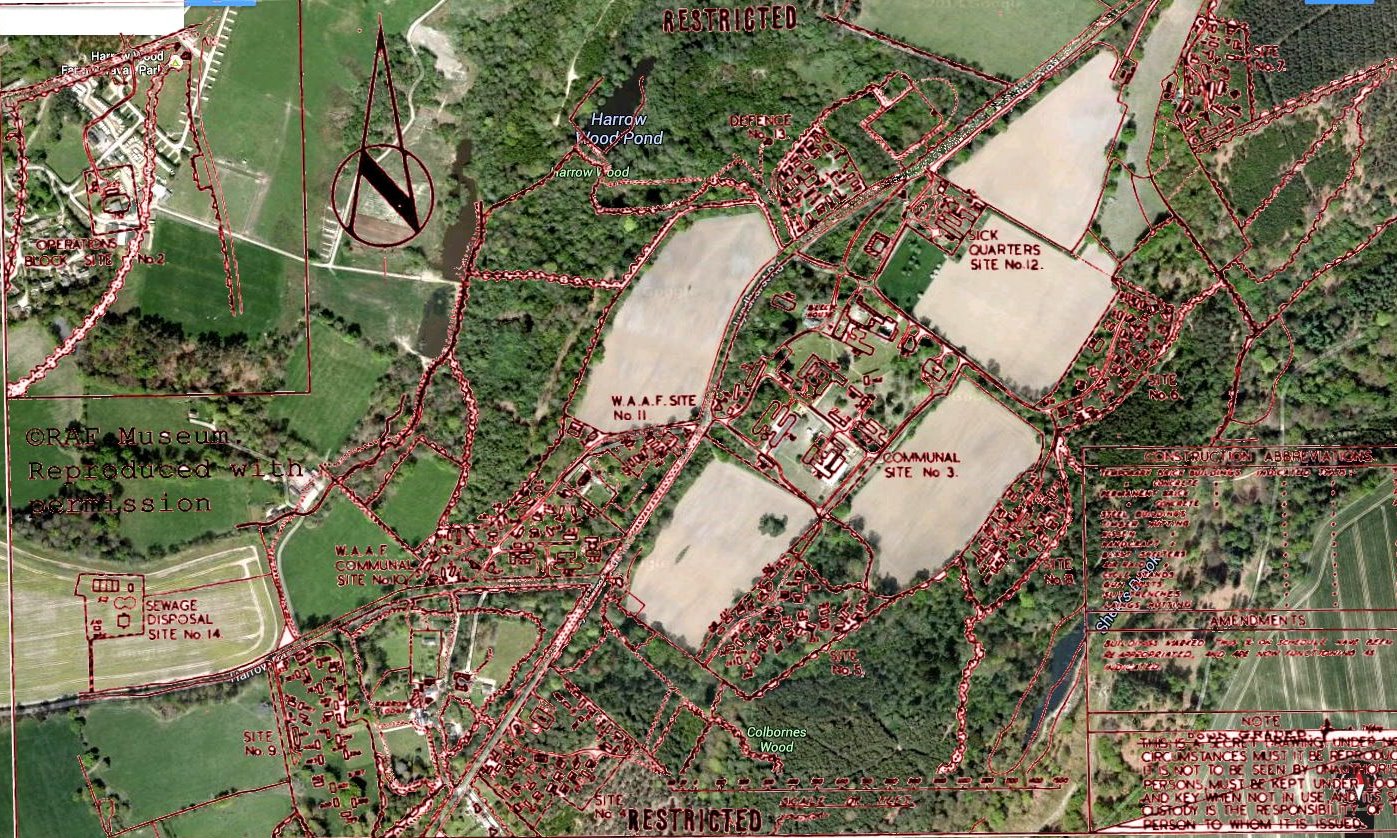
To get that overall feel and sense of size, the above 'Google' map has been superimposed with the original war office drawing, which as you can see is very accurate.
Further more, a limited 1961 OS Map here still shows Nissen huts which I have highlighted in Red, especially site 8, where I used to live. Also it still shows the infant/primary school near Beech House which was the old RAF Gymnasium.
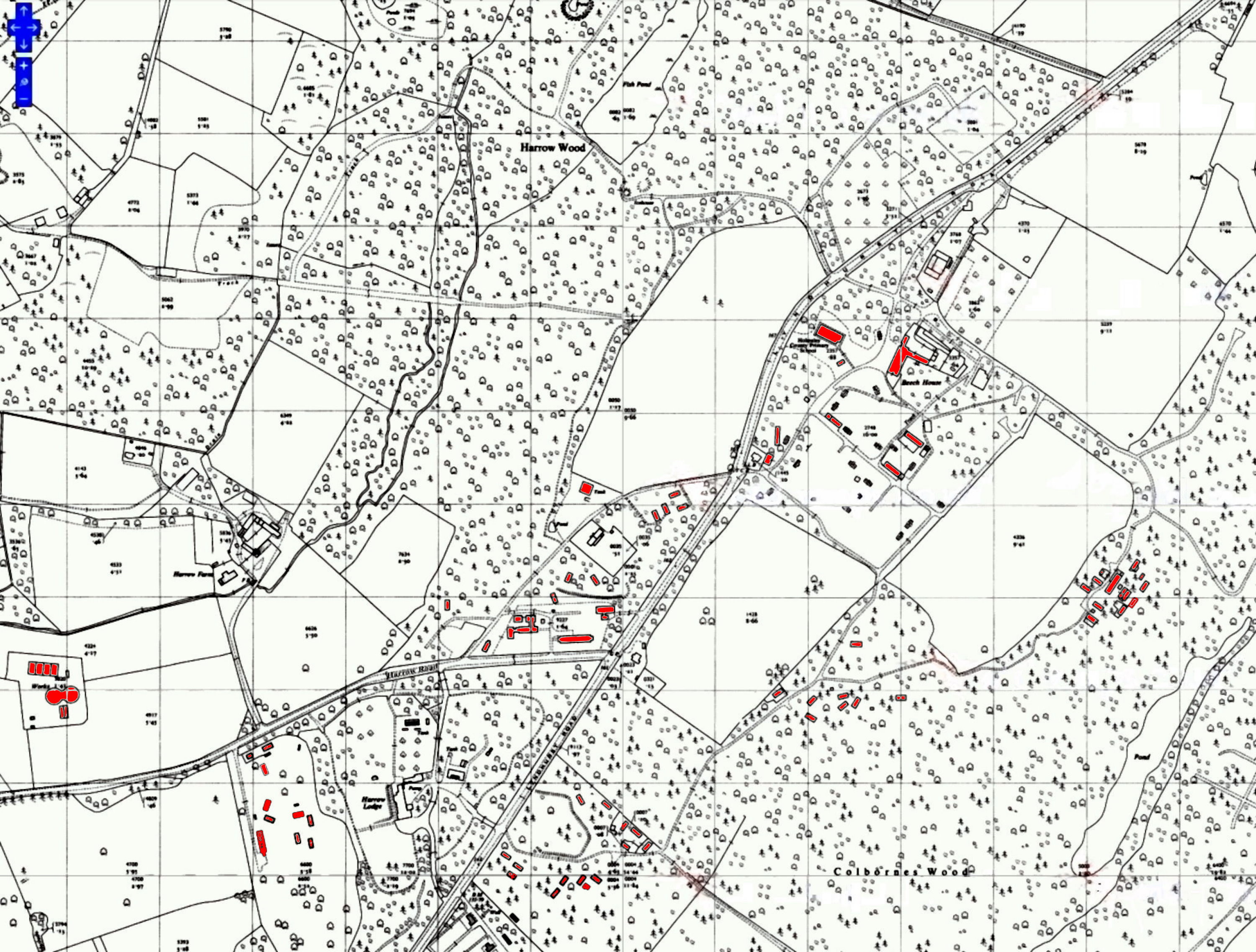
The New Forest National Park has recently produced below LIDAR imaging covering this area and interestingly any Field Archaeology really especially in this area can be compared in my opinion should also use the original war office site plans for superb accuracy.
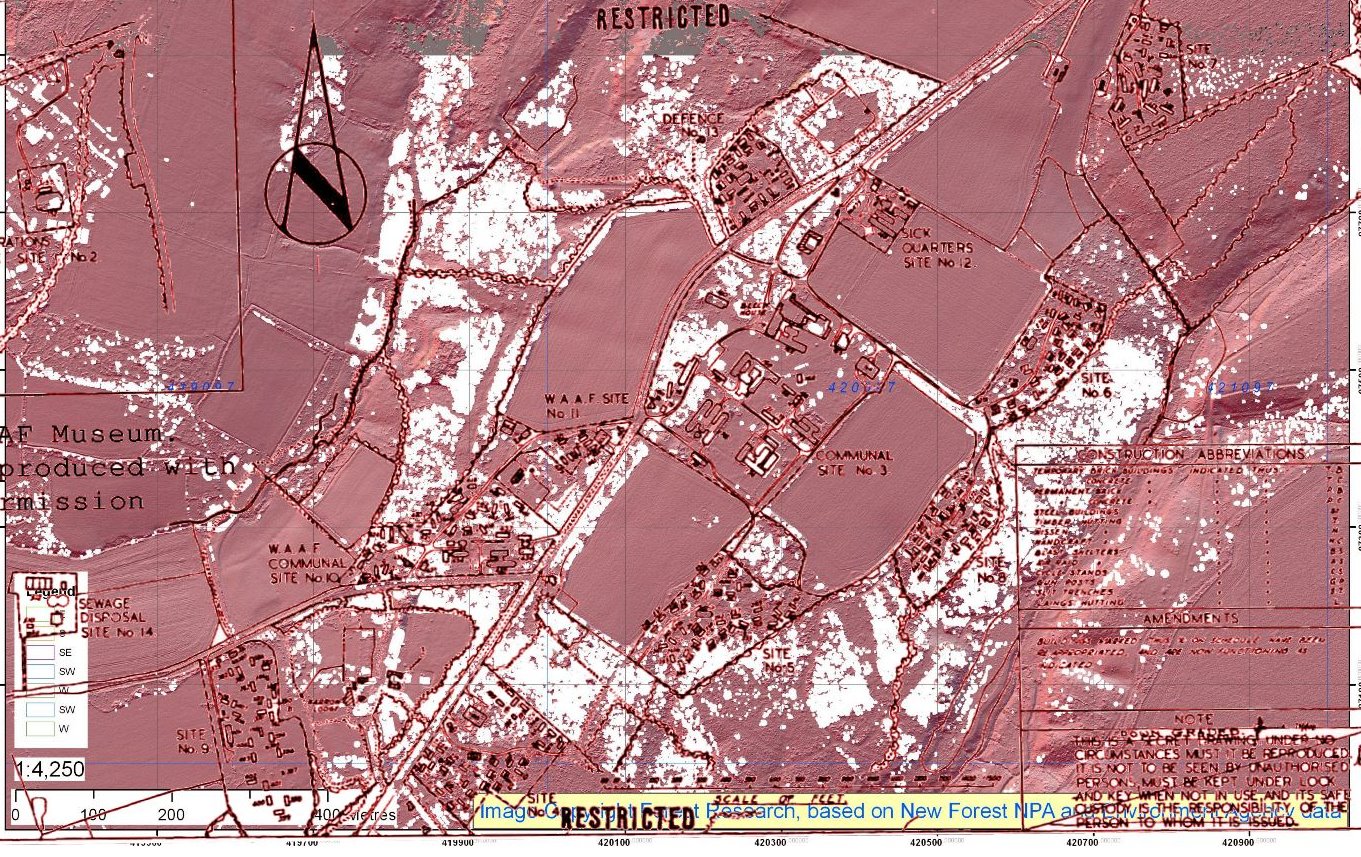
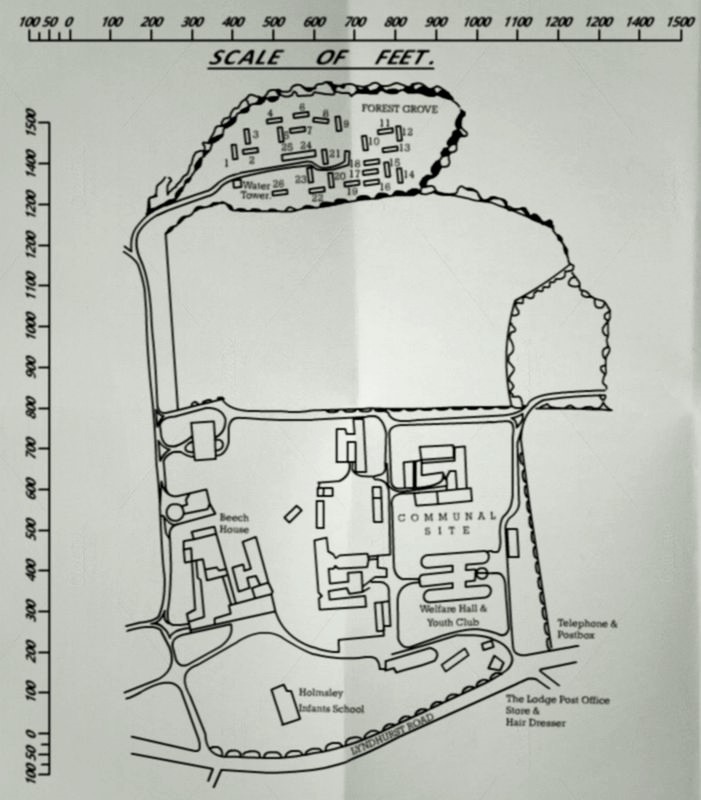 |
The above was sent me by Phillip Drew now living in Poole. Believes it to be a site map from the Christchurch Council, based on the Site Office that was at the Communal Site. I suspect there must be more like this. My Hut Number 23 can be clearly seen. The original Nissen Hut school was rebuilt on where the Welfare Hall and Youth Club was, around 1952. |
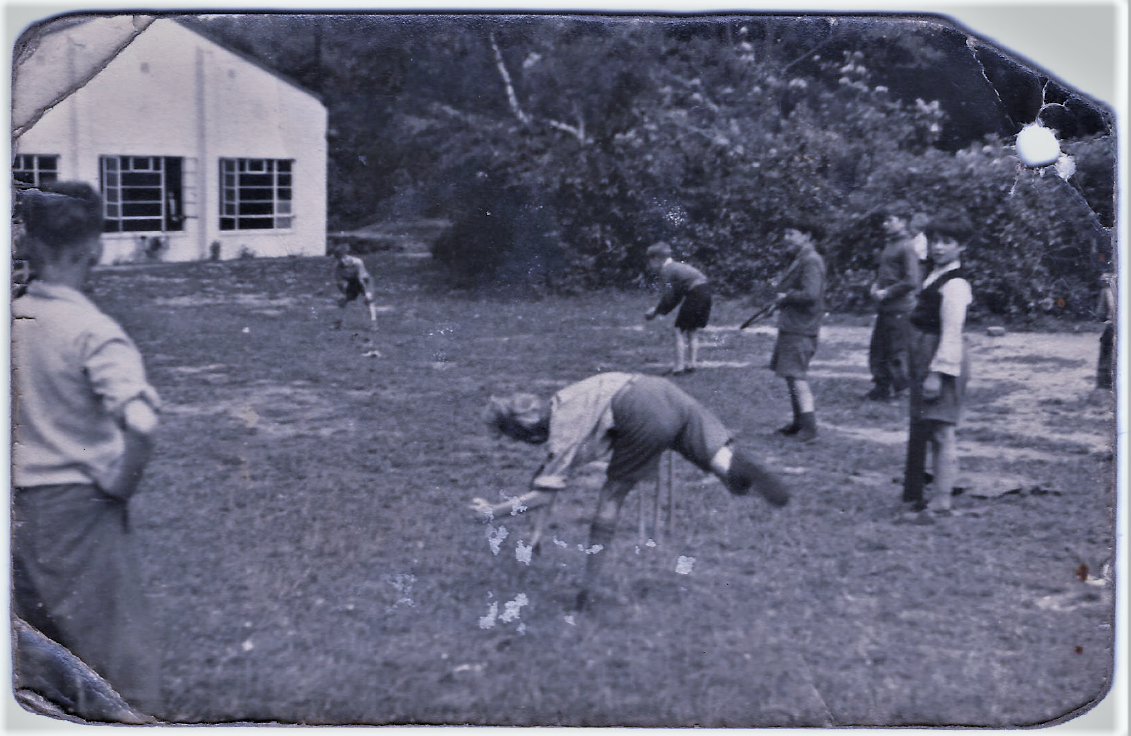 |
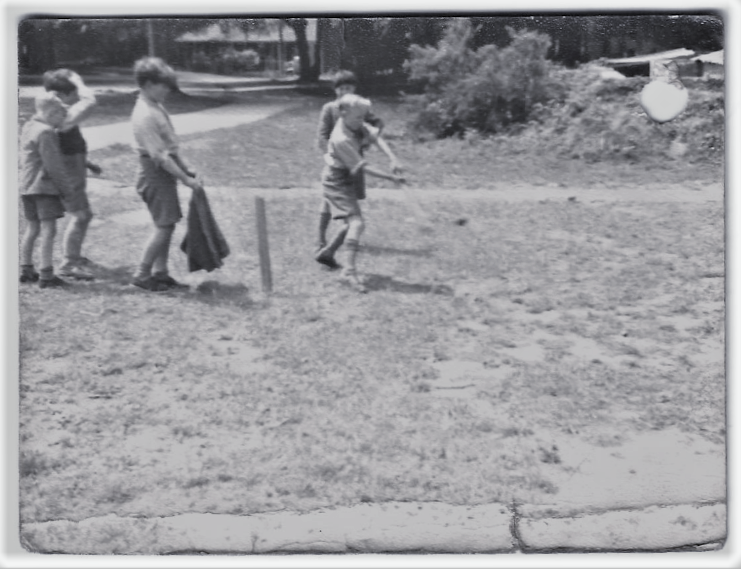 |
|---|---|
 |
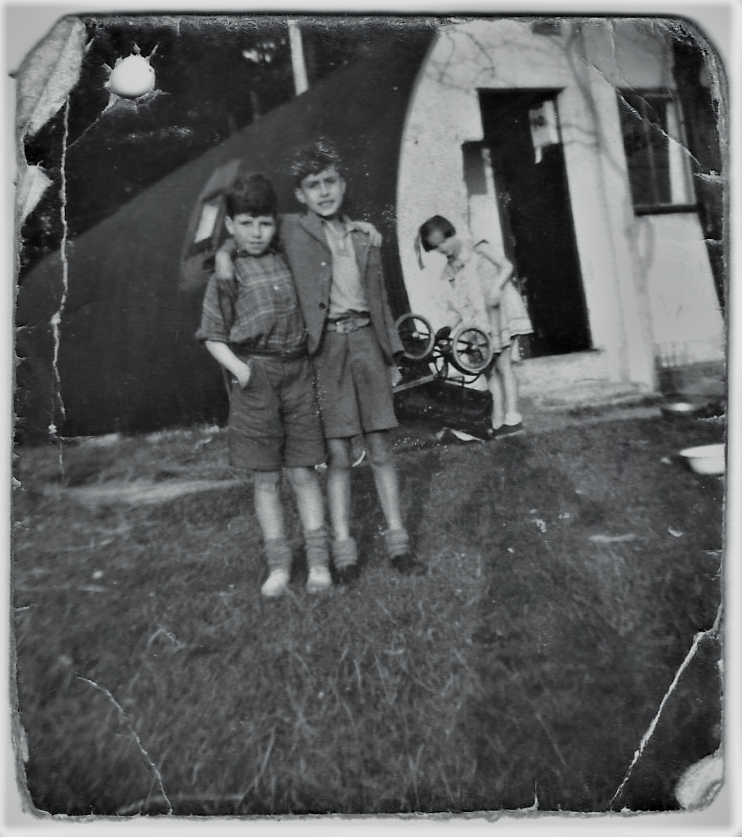 |
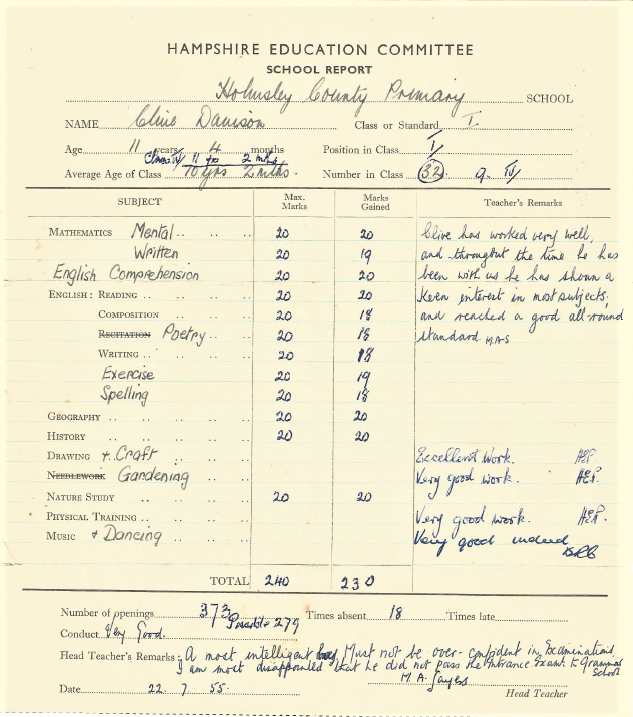 |
These wonderful photographs have been sent to me from a Mr. Clive Davidson who was at Holmsley South the same time as me, not only that he lived one Nissan Hut down from me at 20 Forest Grove (Site 8). The Pictures here show:Clive batting and bowling about 1955, Clive's Mum, Robert Kingham and Nigel Burgess. Clive's Holmsley County Primary School Report. In 1955 Clive and family were allocated a Council House at 79 Everest Road on the Somerford Estate, Christchurch. |
Corresponding with Mr Anthony R Hewitt BA (Hons) Lt Cdr RN (Retd) who is now living at the Port St Mary, Isle of Man, who lived at 4 Forest Grove (Site 8) from 1949 to 1953. This was when his father worked at the Airspeed’s Factory at Somerford. He has kindly sent me the following photographs:
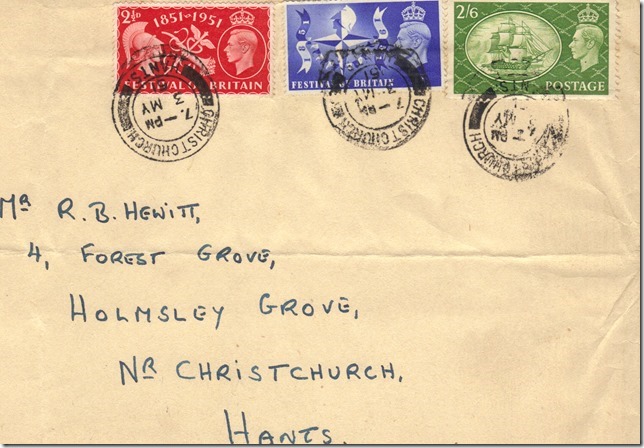 |
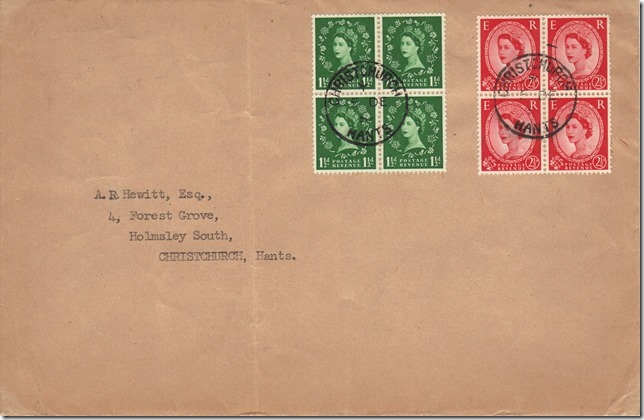 |
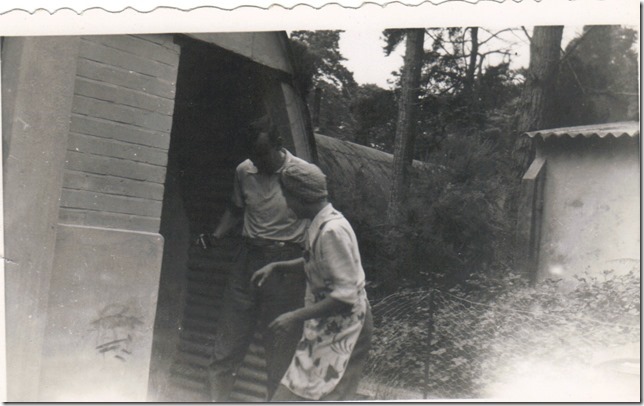 |
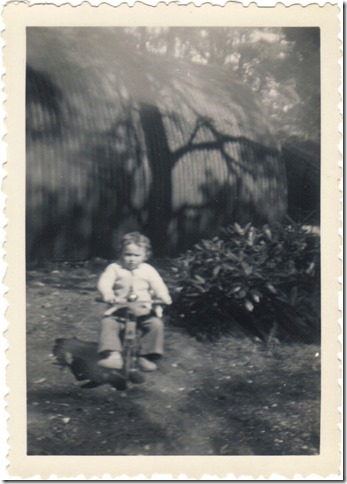 |
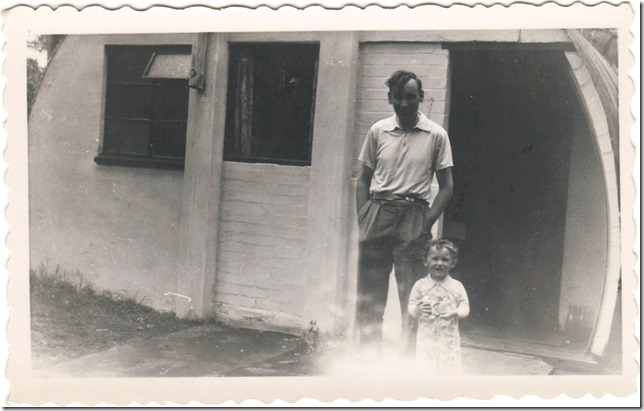 Look Milk Bottles |
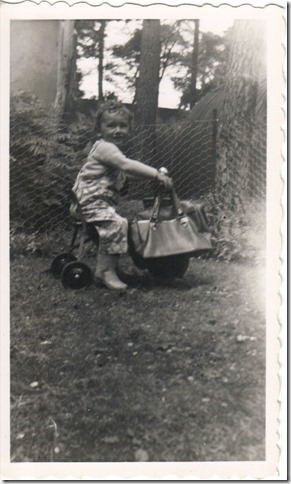 |
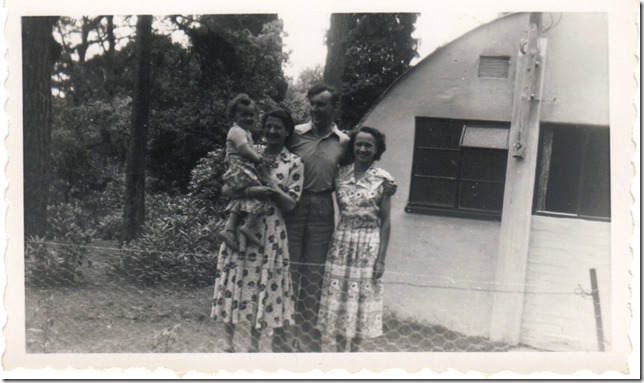 |
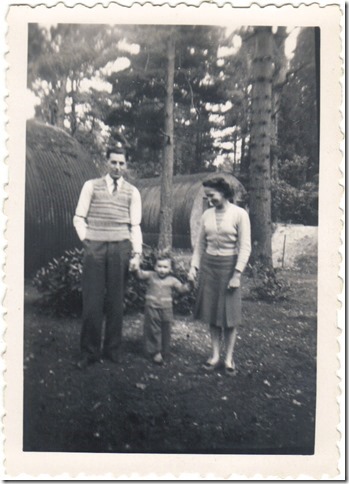 |
 |
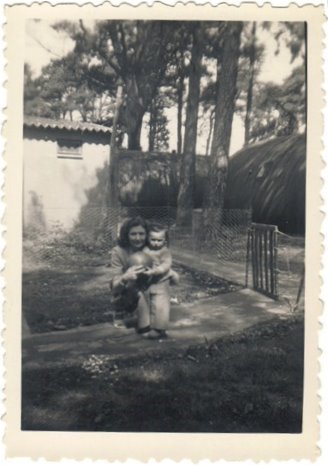 |
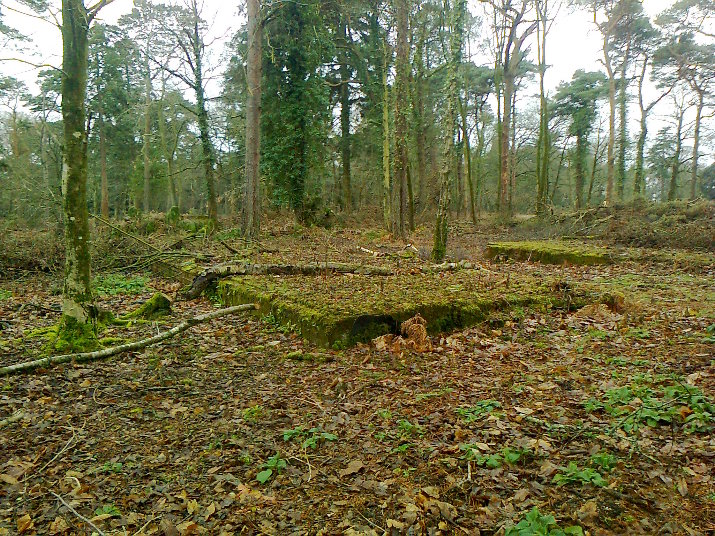 |
|
| Mr Anthony Hewitt visited the old Site 8 - Forest Grove in January 2017 and has kindly sent the above photographs of the the Nissen Hut bases of Numbers 4 and 6 Forest Grove that are clearly still visible today. Notice the external rendering at the end of the Nissen Hut again still visible. | |
Wow, looking at these images of these Nissen Huts, they do fit and reflect the drawing that Phillip Drew sent to me shown above, and its where I used to live. What memories.
The accommodation camps in the main were mainly all Nissen Huts supported with a few Temporary Brick huts for ablution and drying rooms.
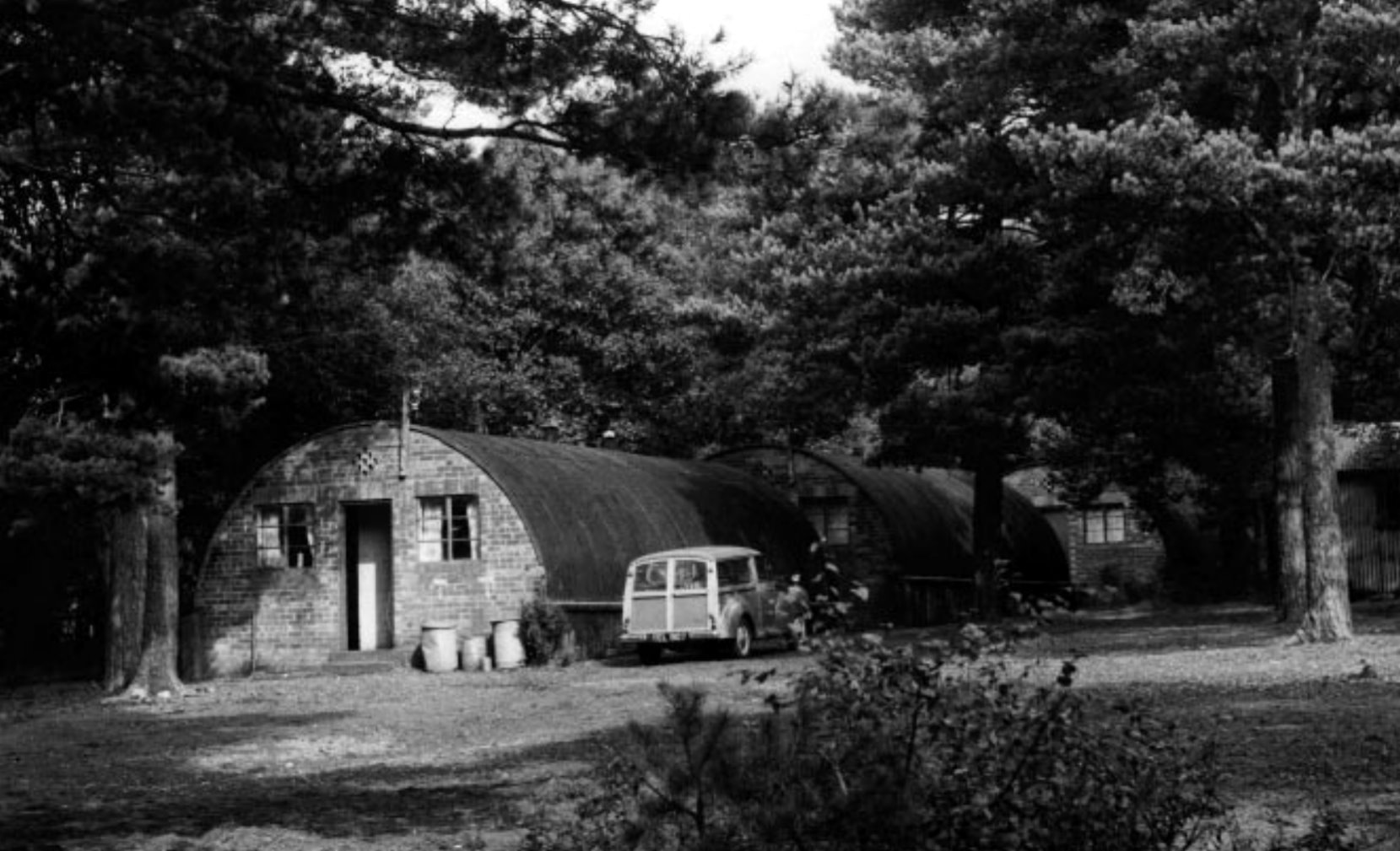
Typical of Huts that was home.
My dad had to do the shopping on
the way home from his work at MEXE, Barrack Road, Christchurch,
otherwise it was a long walk to Bransgore and back especially in winter
time along cold dark lanes where the only shop was.
Very few people had transport which in those days was mainly a bicycle.
My Father was told by
Christchurch Town Council we would be at Holmsley for up to two years,
and in the Nissen Hut we had running water, electric light and a
cooking range.
Rent was 12 shillings and 6 pence a week which included using electricity. In today's money converted to decimal equals 62 pence and half, convert it to 2017 values is £72.36 a week!
There were no flush toilets only the forerunner of the portaloo which
were emptied at communal toilets. To bathe so out came the tin bath in
front of the fire or washing in an enamel bowl. Rationing ended when I
was four years old. Dad always said he needed a torch or candles as the
lights would often go out. I remember collecting fir cones and wood
with my father to keep the range alight. Water was even then provided
by water towers like these shown here at the junction of site 8:
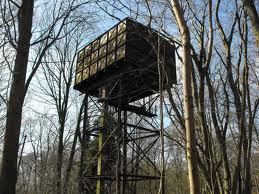
As far as I can remember, I didn't know buses ran to Holmsley South so the only way to get to Christchurch or Bournemouth I thought was to walk into Bransgore and catch the bus. However, corresponding with Mr Jim Brown who was at Holmsley far longer than me, say's there was a good bus service by Hants and Dorset number 15A into Christchurch right up to 10.30pm. I have been contacted by D.J. of Gloucestershire who collects old bus time-tables and has stated that Buses to Holmsley South finally ceased on 30 March 1974.
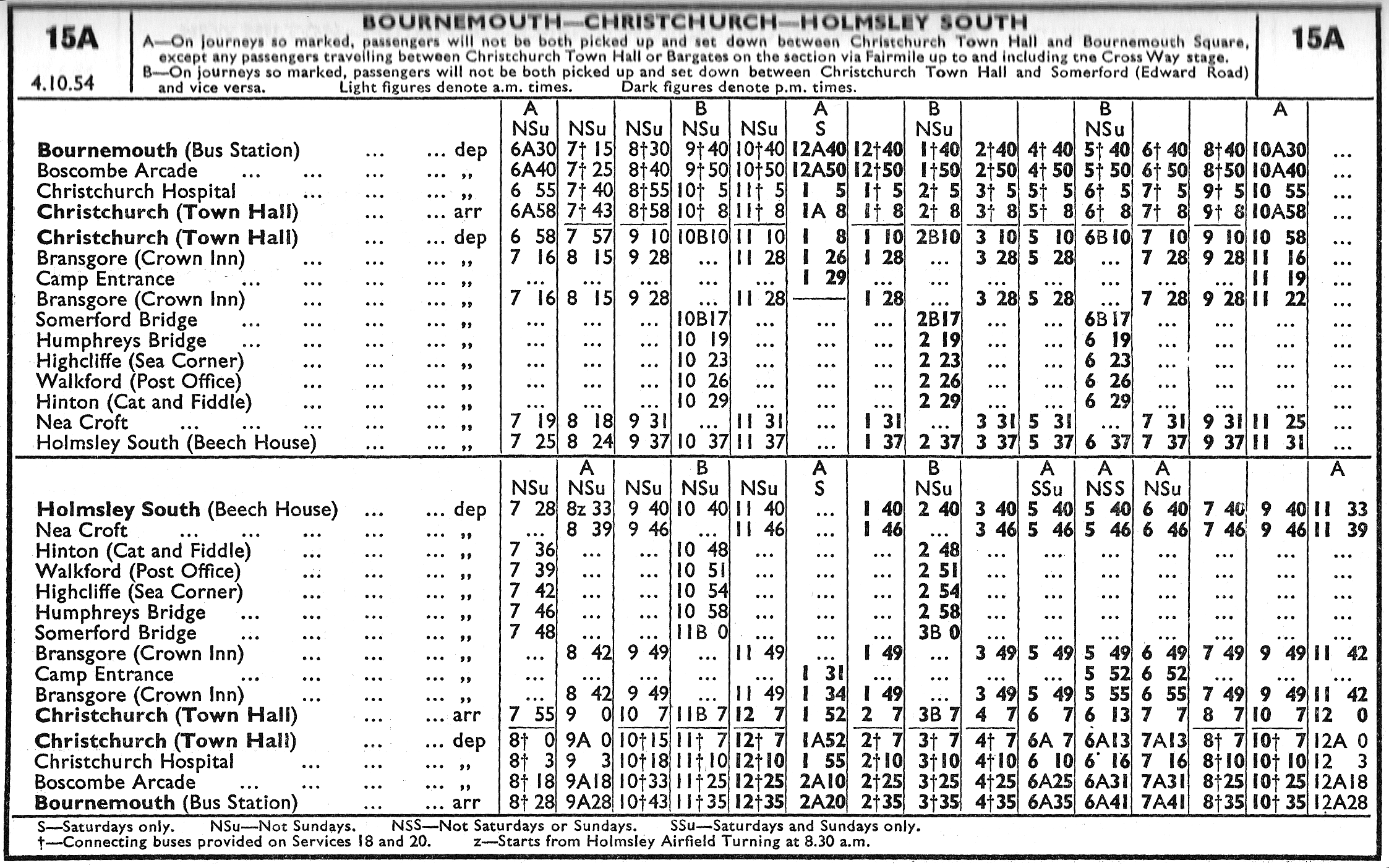 |
Sent to me by D.J. of Gloucestershire |
Accommodation Site Naming and Numbering
It wasn't until early 1950 because of postal problems, the Post Office in Christchurch together with the Christchurch council they changed the names.
The Council also decided to
renumbered the sites, starting from main runway turning apron down the hill on the south side of
Lyndhurst Road up to the Beech House site, across the road to the north
side and back down to Harrow Lodge.
The Nissen Huts all had numbers and the areas had names, such as Hillside Grove and Pine Grove (sites1 and 2 Runway turning apron pans) until 1954, Bush Grove (site 3), Harrow
Crescent (W.A.A.F Communal site), Oak Grove (site 4), Orchard Grove (site 5), Bush Grrove (Site 6), Beech Grove (site 9) and Forest Grove (site 8), the latter is where I was living. Site 7 was used for Christchurch council staff and was used to store priority euipment such as lightening cables. Post
and milk was delivered to the door.
Recieving correspondance from Mark Rudge, who Grandmother, Mrs Winifred Alice Rudge who lived at Holmsley, opened a Post Officer Saving Book, and has Holmsley South stamped on the front. The initial entry is stamped on the 21 August 1951 at Holmsley South, 8 Oakwood Grove, Holmsley South, Christchurch, Hants. Oh dear the Holmsley post office gave a missleading address on her PO Book. That said, so what, whilst families were at Holmsley South many PO books, ration and ID Cards many area names where wrongly worded written in by the person who wrote the name and address working in the post office. I've heard many additional names such as 'Pine tree grove, Beech nut grove and Harrowing Crescent'). That said, postman knew where the actual address sould be. Eventually, Mark's grandparents Arthur & Winifred Rudge who lived at Oak Grove for some years, then moved into a new council house at 2 Druitt Road, Somerford, Christchurch about 1954.
Mark Rudge's two photos here:

So that the sites can be easily identified I will be using the original numbers which was used by the Ministry of War on a plan of the areas which can be seen on the web under the New Forest Remembers. See link here:
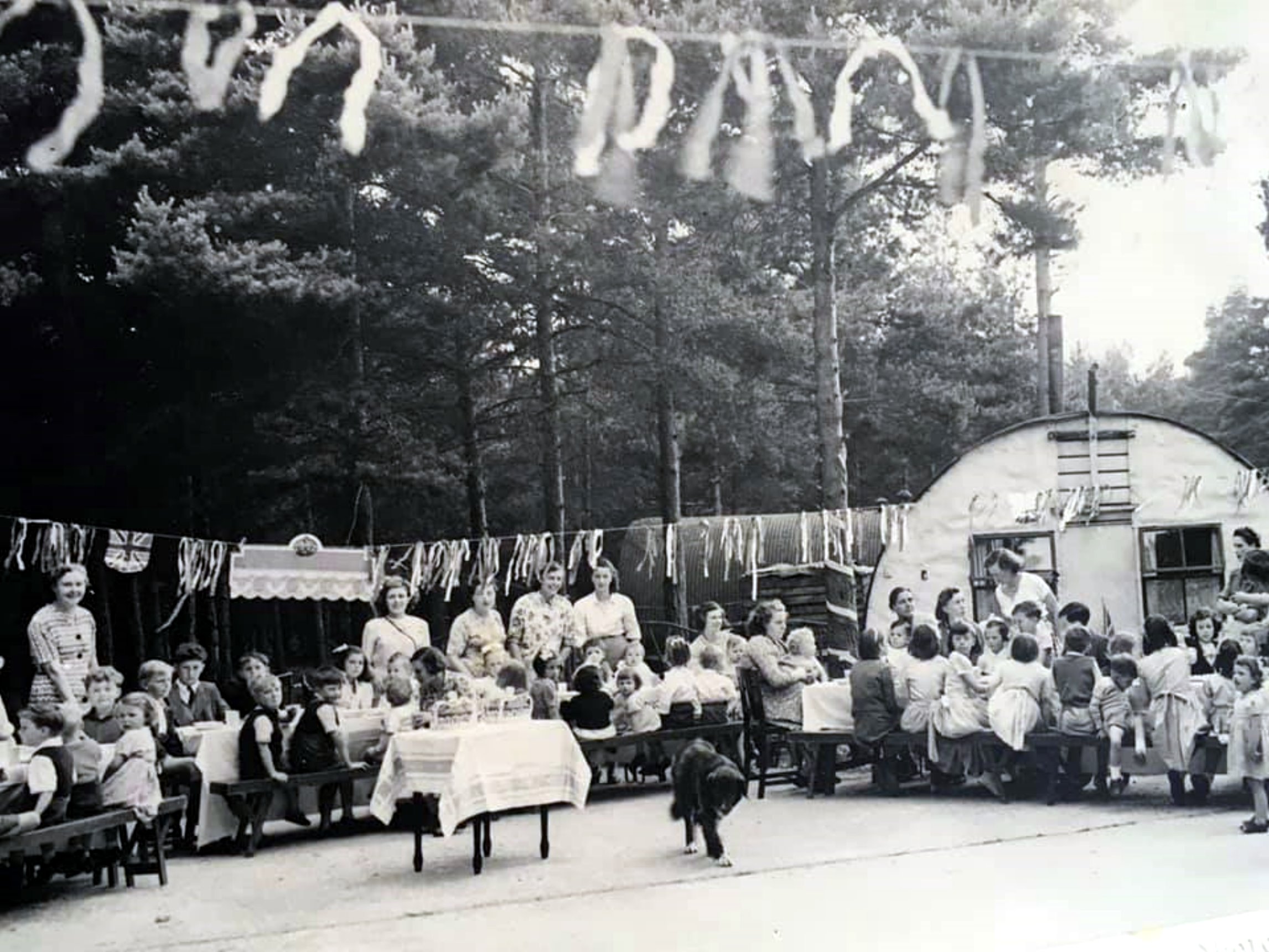
Site No 1 Coronation Day, June 1953, site party. Christine Hirsch Copyright.
Note: Mrs Winifred Alice Rudge (Grandmother of Mark Rudge). She is the lady stood on her own on the left hand side.
 Site No 9
Site No 9
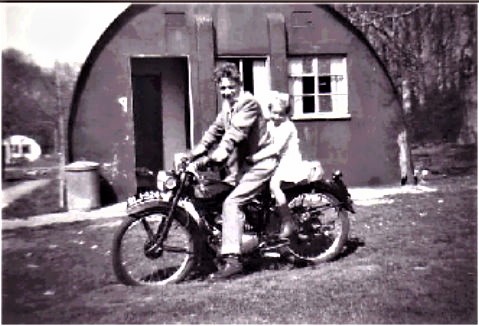
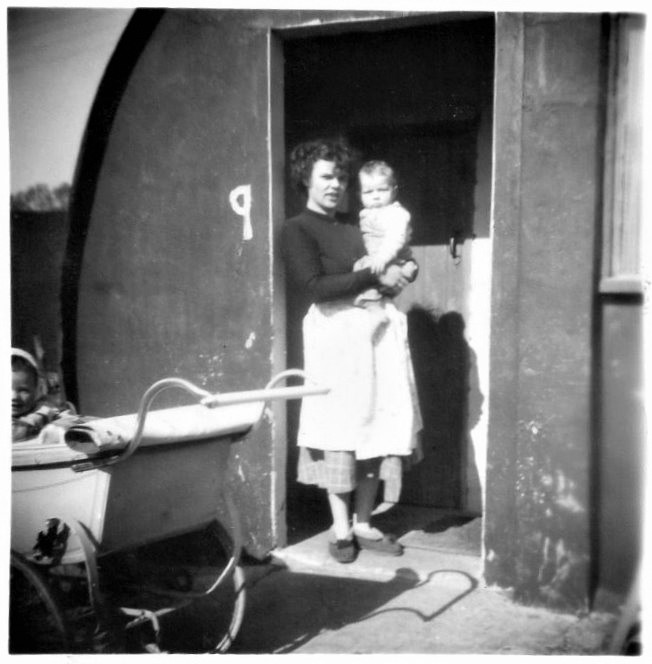
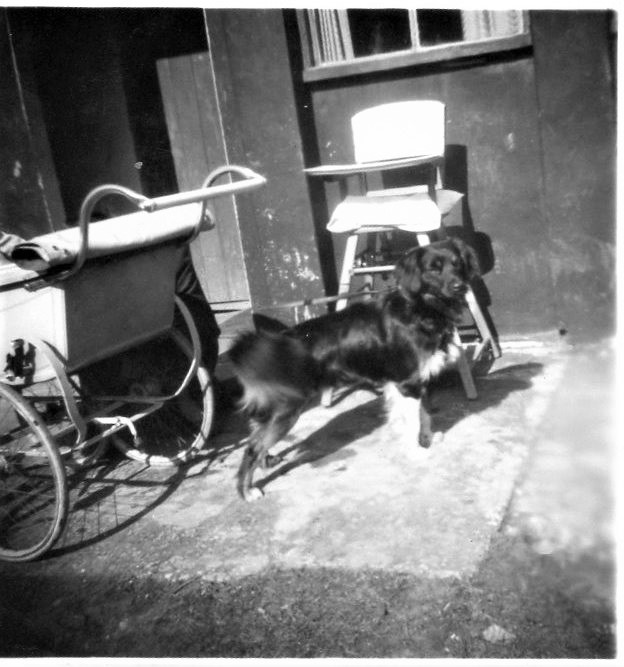
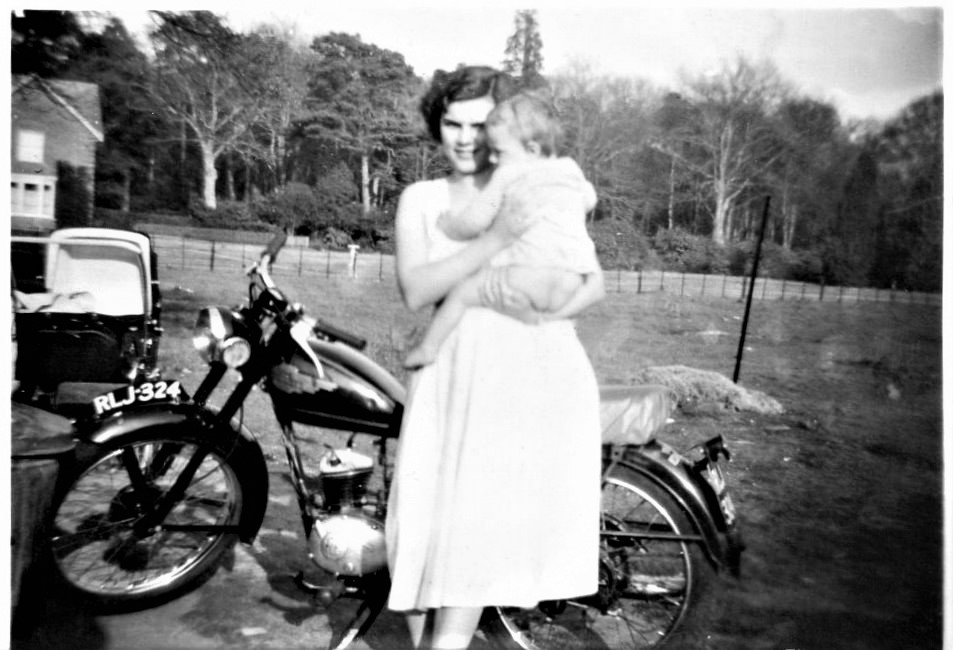
The above photographs have been sent to me by Mrs Beverley Hawes.
These show her Father and Mother Mr William and Mrs Alma Jenman with their Dog 'Butchy' who lived at Number 9, Site 9 showing in the last photograph, the side of Harrow Lodge.
 Site No 5
Site No 5
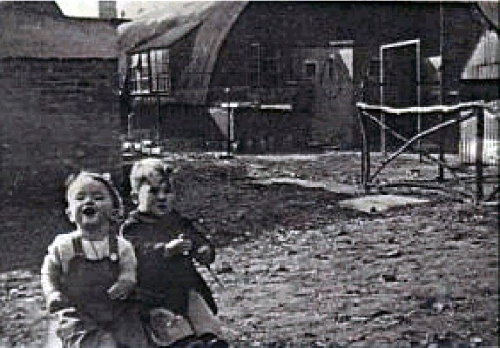 Site 10
Site 10
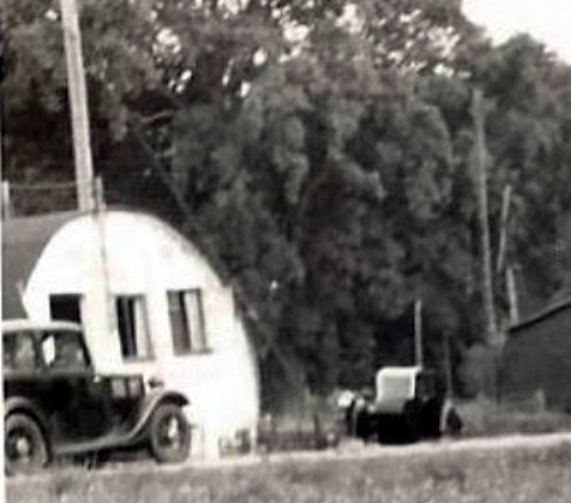 Site No 9
Site No 9
The above pictures have been sent to me since asking for information on 'Friends Reunited' which is now closed.
Temporary brick Building at Holmsley South
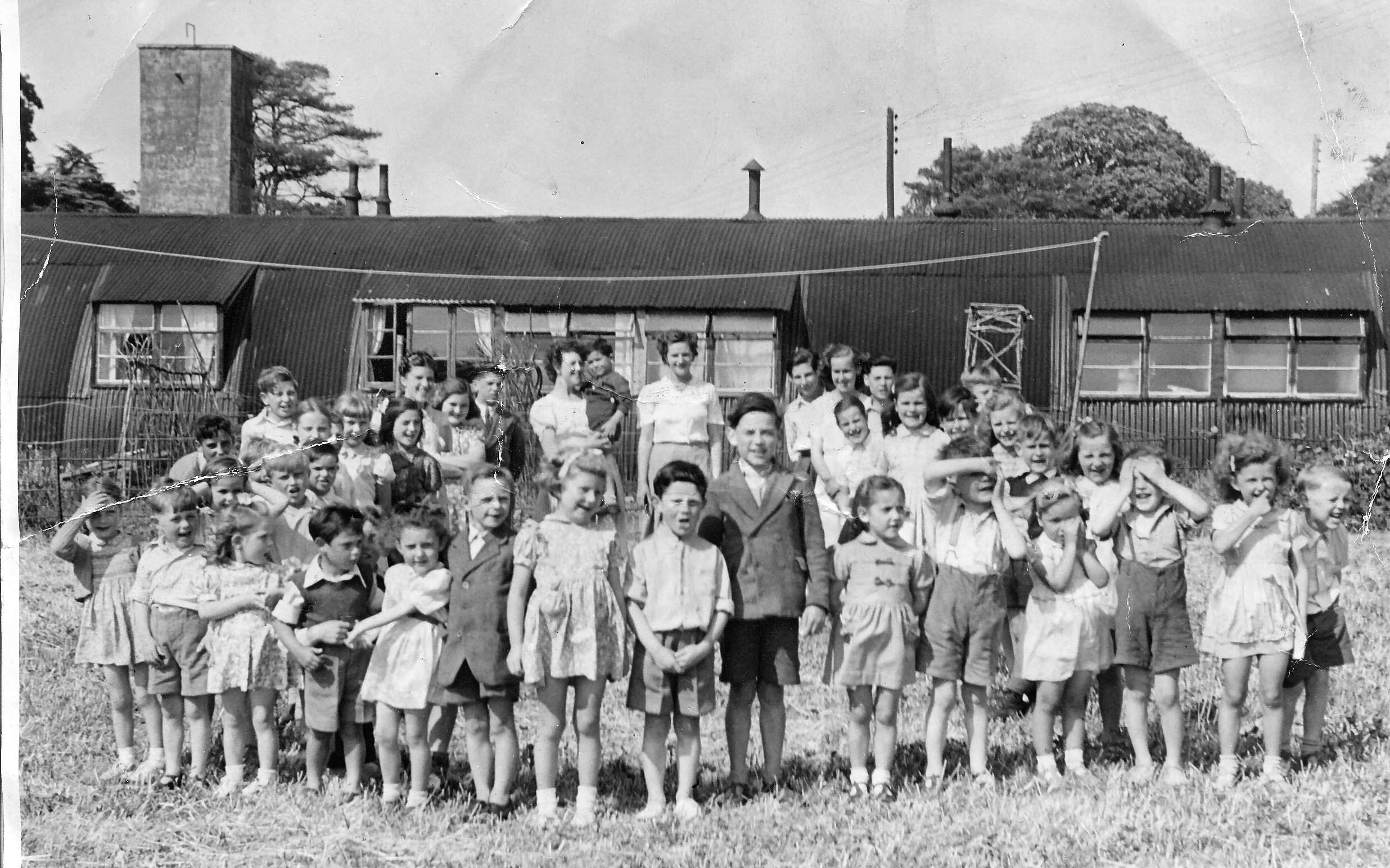
1948 Kids Party for all the children outside one of the Holmsley South large Nissen Hut (Communal Site 3), with Mrs Sheila Moss and Mrs Betty Whitaker as adult helpers in the background, photograph credit from Woodie (Newcastle Upon Tyne) Link Here
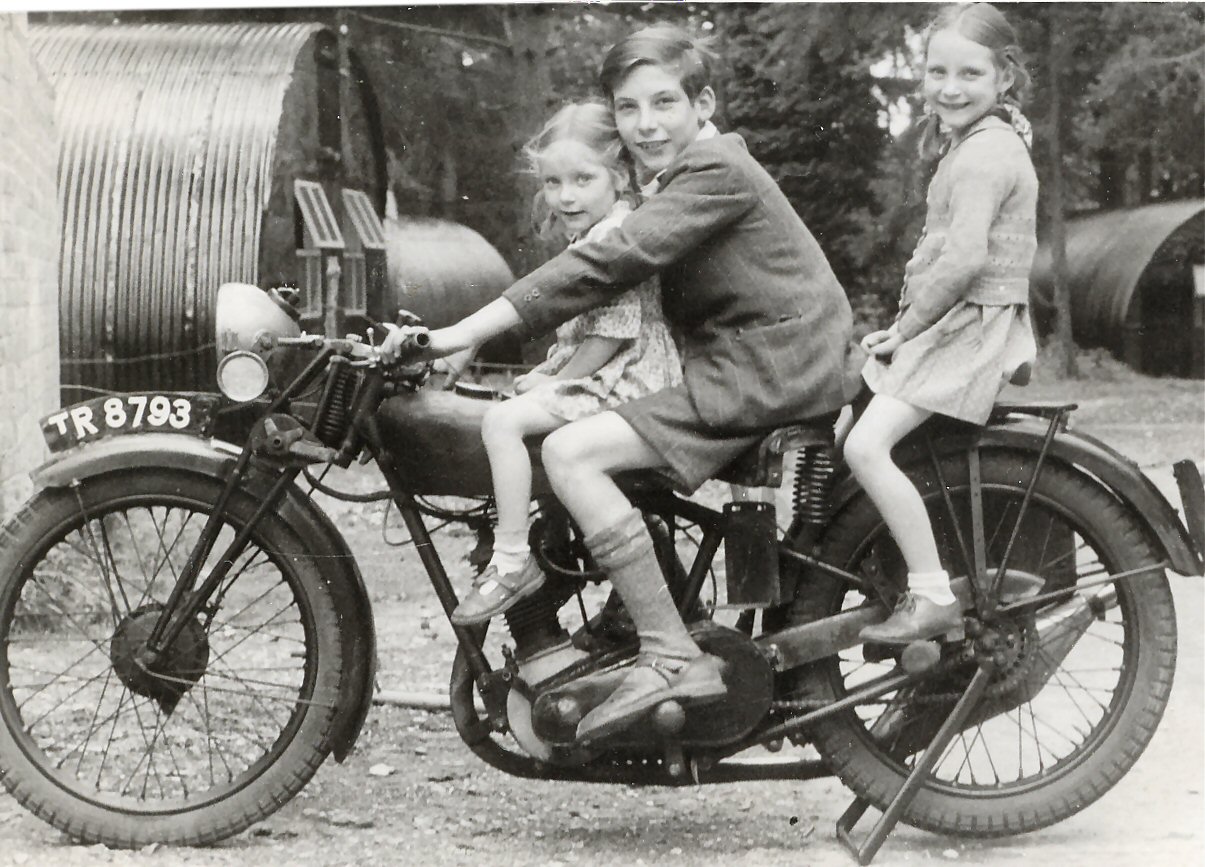
Neil Wooding and his two sisters Anne and Noreen on a pre-war Royal Enfield at Holmsley South, which was needed, as their father had to travel 10 miles to work. Photograph credit from Woodie (Newcastle Upon Tyne) Link Here
Some of My Memories
The downside to summer was
because the huts were surrounded by trees and bushes there were quite a
lot of flies about during the day time, also the huts got hot and
stuffy. Icy cold during the winter.
I can remember lots of bonfires that were always burning. Dad had
bought some new furniture, a Queen Hygena Dresser, table and chairs a
from Stour Road furniture auction next to Christchurch Railway Station
which was delivered to our Nissen hut.
The washing was done in the sink with water heated on top of the range, and then it was put through a hand wringer if you were lucky enough to have one. Ironing was done with a flat iron heated up on the range.
The floors were covered with roofing felt painted with lino paint. Some people did lay proper lino or carpets but they wore quickly owing to the concrete floors. No Television as these were very, very expensive, and we only had a big radio. I remember going to the infant/primary school in a Nissen Hut which was close to Beech House which was the old RAF Gymnasium. The teachers where Miss Sayers and Miss Clough. At playtimes, I remember vividly we used to climb into the rhododendron bushes which in my small eyes where everywhere. The school free third-pint milk bottles used to freeze in winter and the milk crates were brought into the class room and stacked near to the pot-bellied black stove to thaw out. The milk would be that frozen into a pole of iced milk would be sticking out from neck of the bottle, the silver cap sitting on top! We still had to go out into the playground, though this would give us hot milk at break time.
A Christchurch Councillor's Vision Of A Tin Town For Outcasts
As you can well see by reading on the links above, there was a lot of
concern over this temporary housing and Christchurch Town Council by
4th December 1953, Councillor Stanley Kermode the housing officer, drew
attention to the way in which the whole encampment was deteriorating.
He said: "I have visions of Holmsley becoming another tin town
settlement for outcasts such as I saw on the outskirts of Casablanca in
North Africa."
Hence the term 'Tin Town' was used in which the Christchurch Times lead on this article as shown here stating a 'A Colony For Social Outcasts':
'YOU'LL BE SENT TO HOLMSLEY'
As can well it can be appreciated, this article enraged the families at Holmsley through no fault of them, especially just before Christmas, however, it did urged the council to get their act together and increase the speeding up of the building of council accommodation, especially at the new Somerford estate.
You can download these Christchurch Times Cutting as they will be slightly larger than shown here. Courtesy of the Christchurch Historical society.
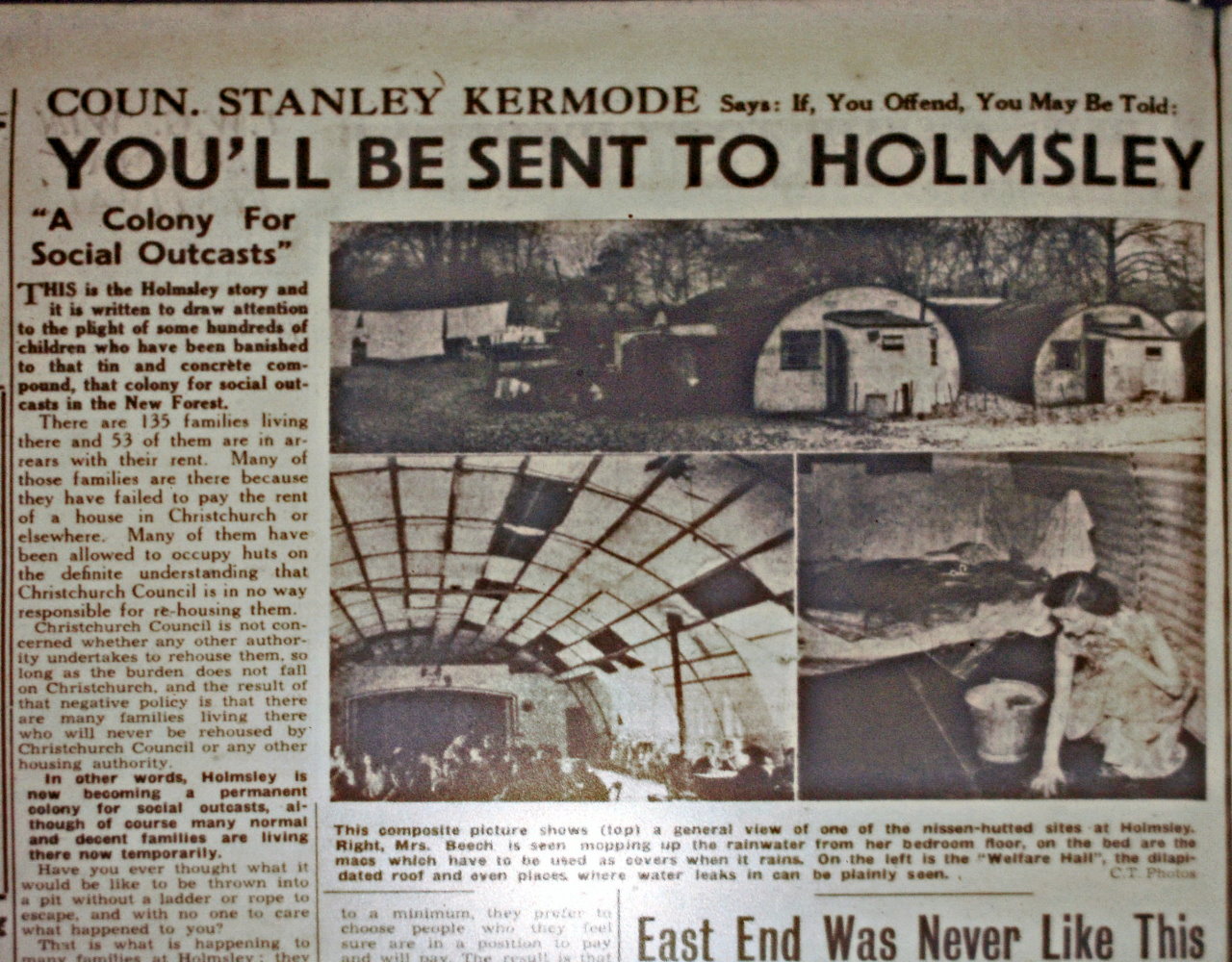
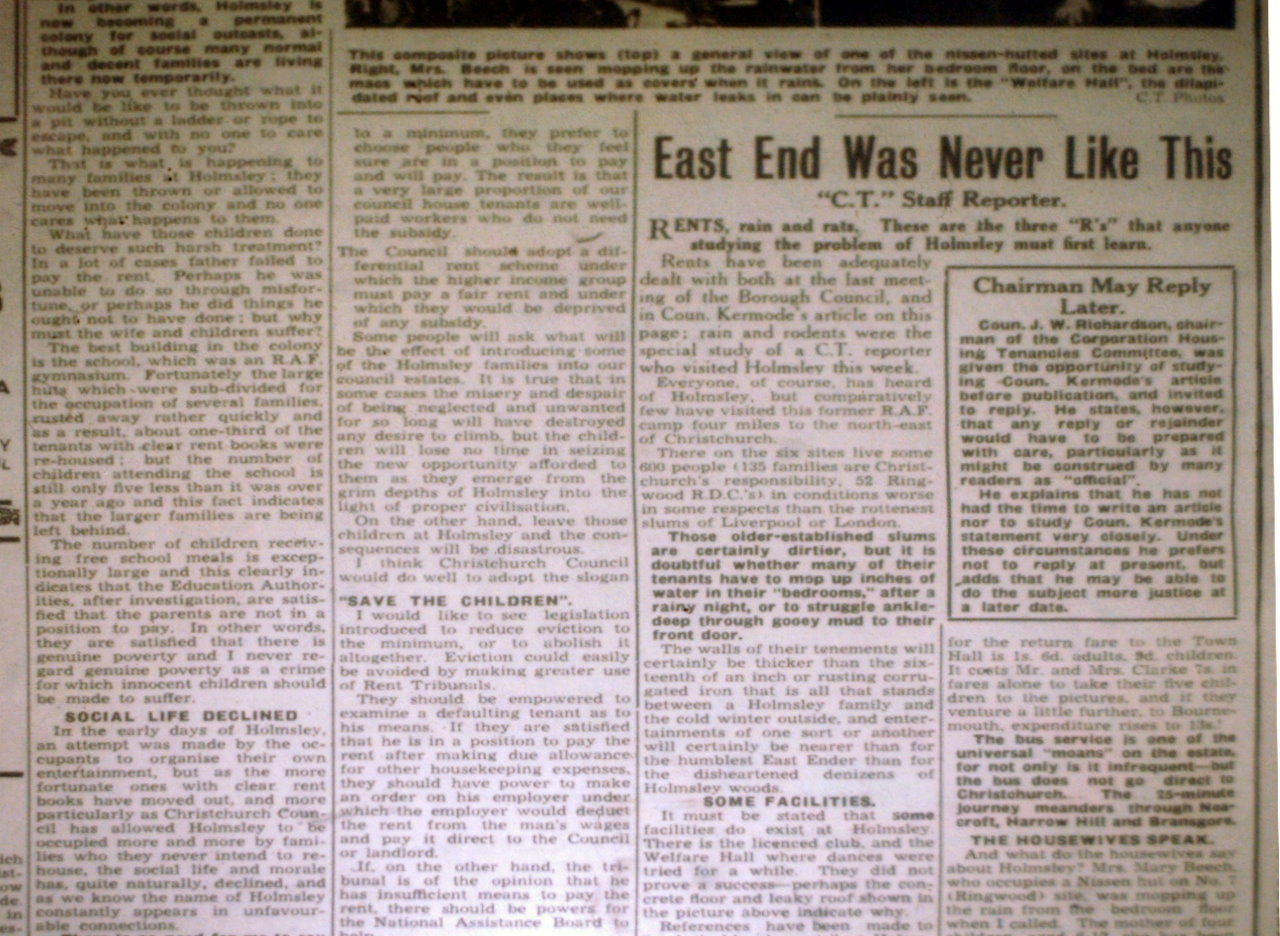
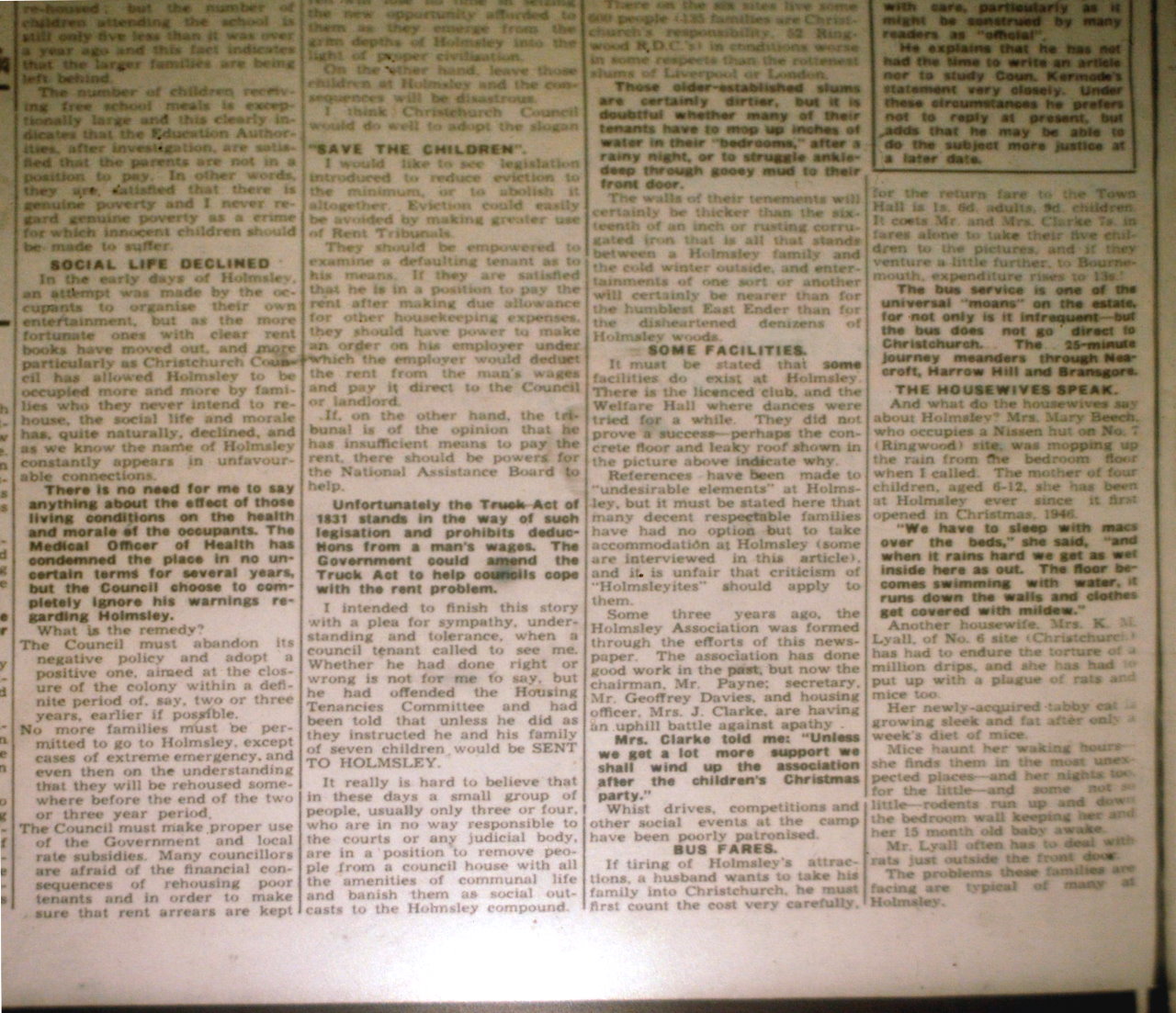
I have received an email from Mr Phillip Beech who informs me, that the picture on the front of the Christchurch Times above showing a woman clearing up water from the floor of the nissen hut is his mother, Mrs Marion Beech as detailed in the 'House Wives Speak' column, which Phillip still has an original copy.
Corresponding with Mr Phil Beech he sent me the above photograph of a young Phil, who was at Holmsley South. His family were one of the very first to be accommodated at the Harrow Site in 1946. Address: 5, Harrow hill, site 7 (formerly Site 9). Pictured here with his Mum Marion and Dad. His family were one of the first to to move to holmsley in 1946. Phillip was born in that hut in 1947 and later went to school in the old RAF gymnasium that was converted into a school. He is now living at Bransgore. He also has school a report from Holmsley County Primary school, dated 24 July 1953 informing that there were 35 in the class, and the average age 5-6. The class teacher was Mrs EM Evans, head teacher was Mrs MA Sayer. |
I have received details From Lynne Kapryn nee Oaten.
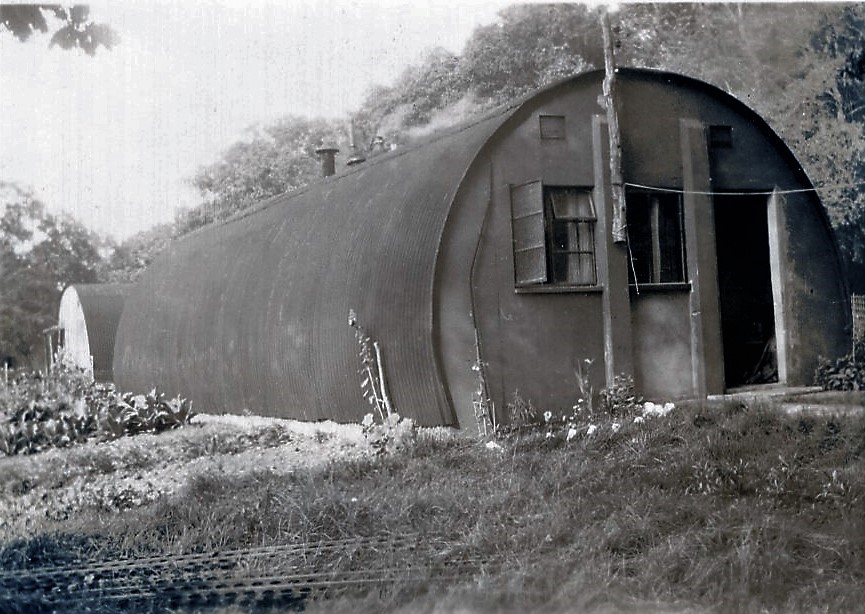 |
Here is the Nissen hut that my parents, Peter J. and Constance “Connie” Oaten lived in from January 1948 to June 1951. They were both in the RAF – he was an instructor bomber pilot and my mother was in payroll. When they first arrived at Holmsley South, Peter J. had just started working at the Ministry of Supply at M.E.X.E. in Christchurch.
|
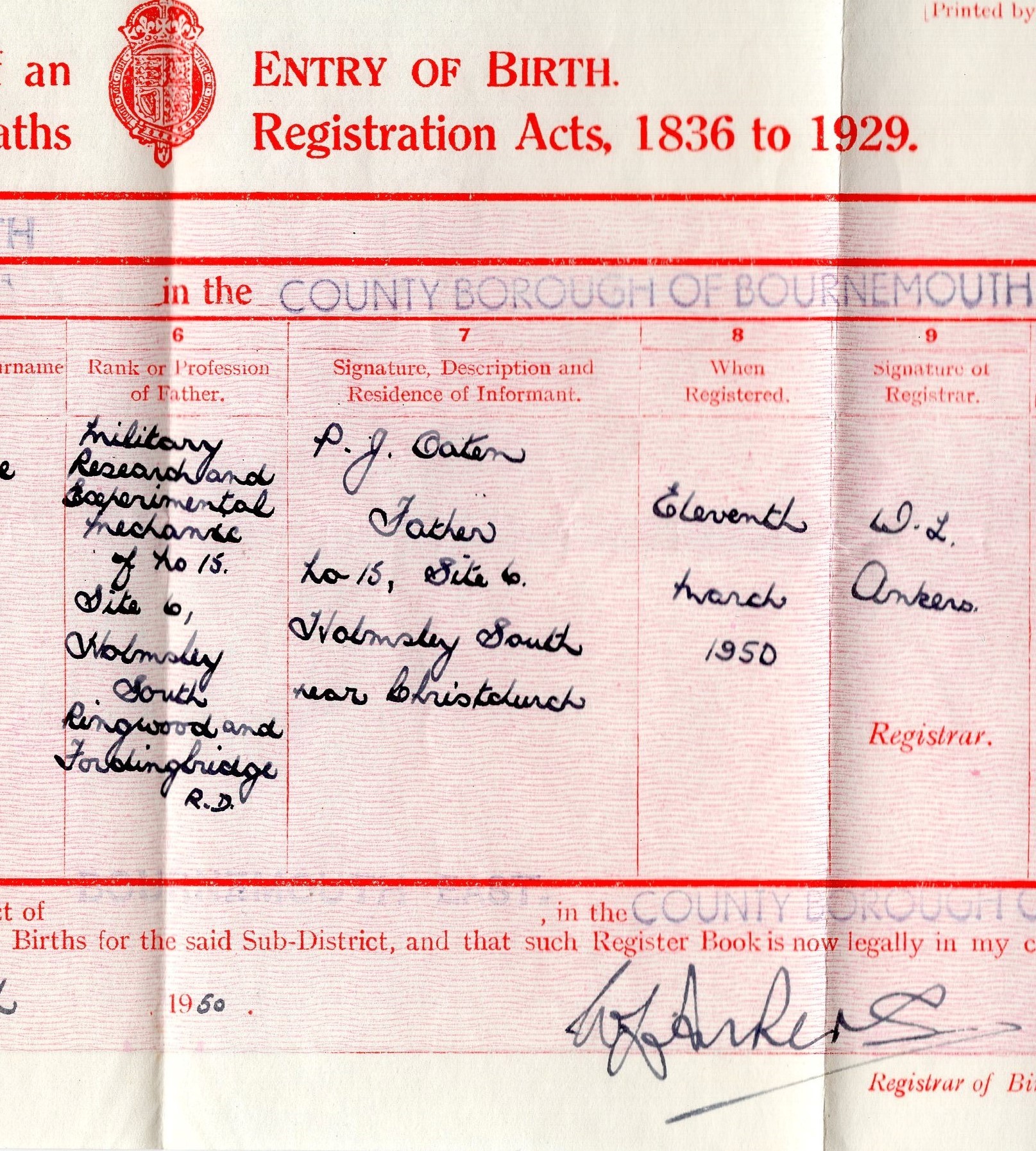 |
Their address is listed as No. 15, Site 6, Holmsley South as shown on part of my birth certificate. I was born in Royal Victoria Hospital in Boscombe on March 10, 1950. On another document the address is shown as 31 Oak Grove, Holmsley South.
|
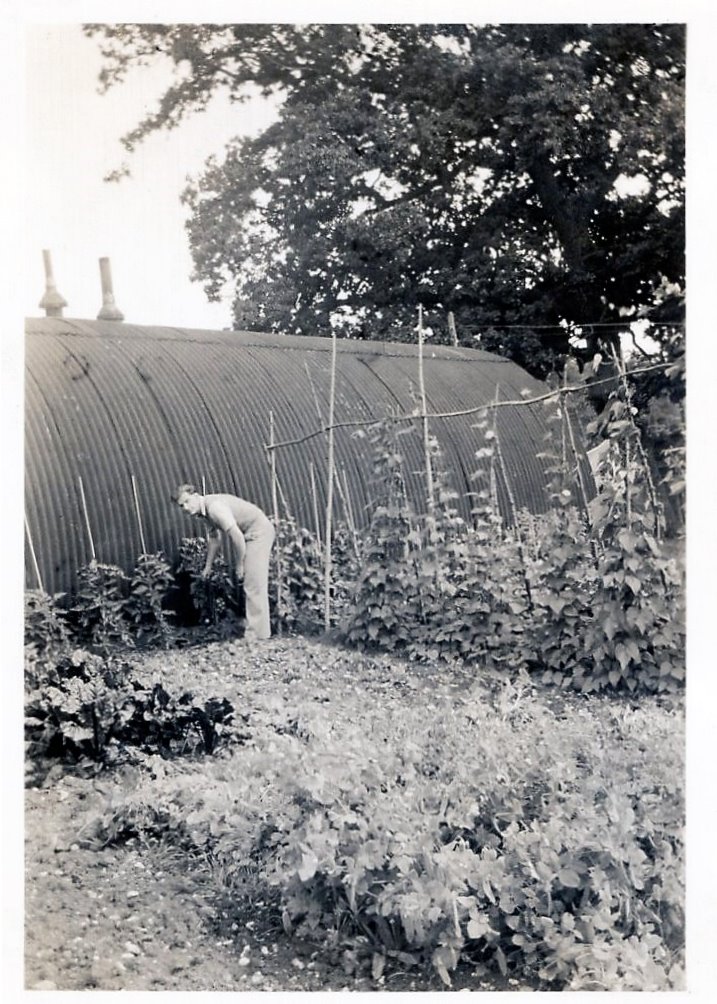 |
Above is a picture of my father tending their vegetable garden outside their Nissen Hut – the fruits of which they shared with their neighbours. We must remember that after the war and for several years afterwards, things were still rationed, including vegetables.
|
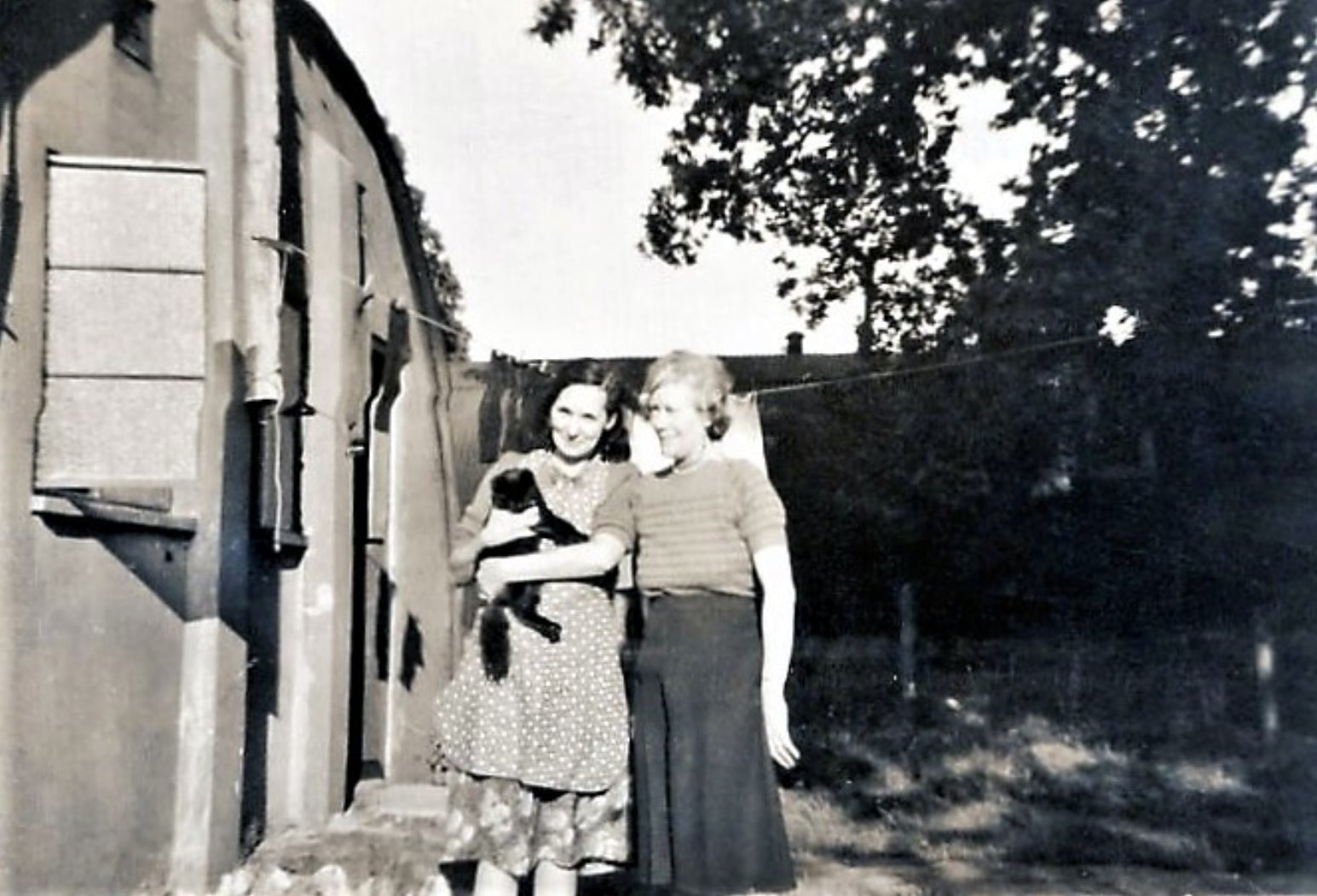 |
They had a black cat called Curly. See the clothesline in the background. Overall, you can tell by the pictures, they were happy days. Having been through WWII for all of those years, this was heaven in comparison to what they had been through. |
FINALLY THE CUTLER FAMILY MOVED .
Some young couples met and
courted and married during their time at Tin Town. In 1954 just after my birthday we moved out of Forest Grove (Site 8) into a new Council house flat in 7 Slinn Road on the
Somerford estate.
However, dad said for other families it was a big disappointment not
seeing their names on the council list and not knowing when they were
going to leave Tin Town.
As one family moved out another moved in and had to cope with all the hardships.
Old Holmsley Nissen Huts at Beech House Communal Site prior to being demolished in 1961.
These where found in my father's old Army suitcase, and had not been seen for 60 years:
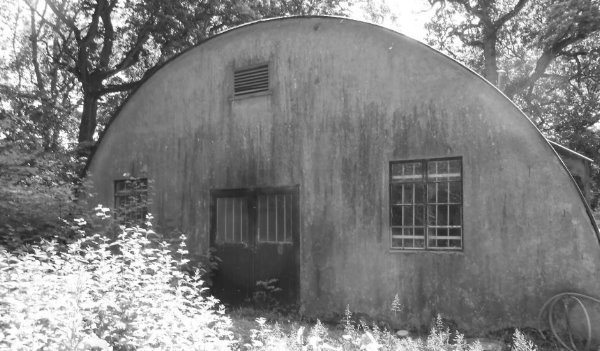

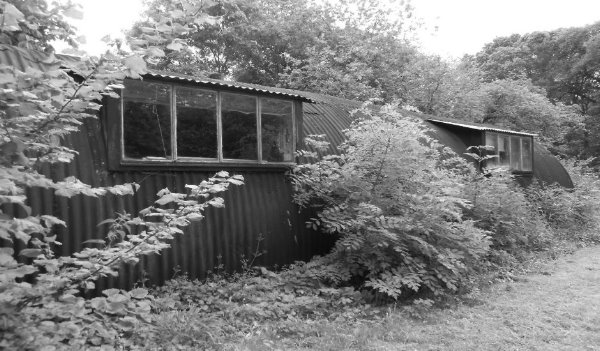
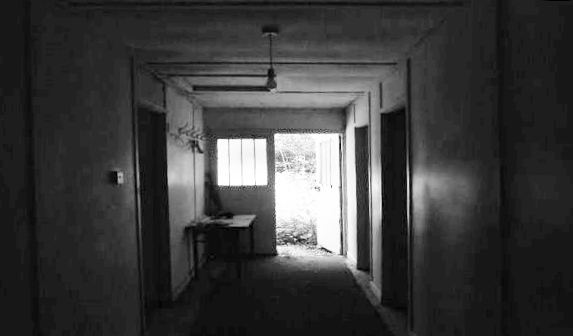
Field Archaeology that is still available to be seen.
|
|
|
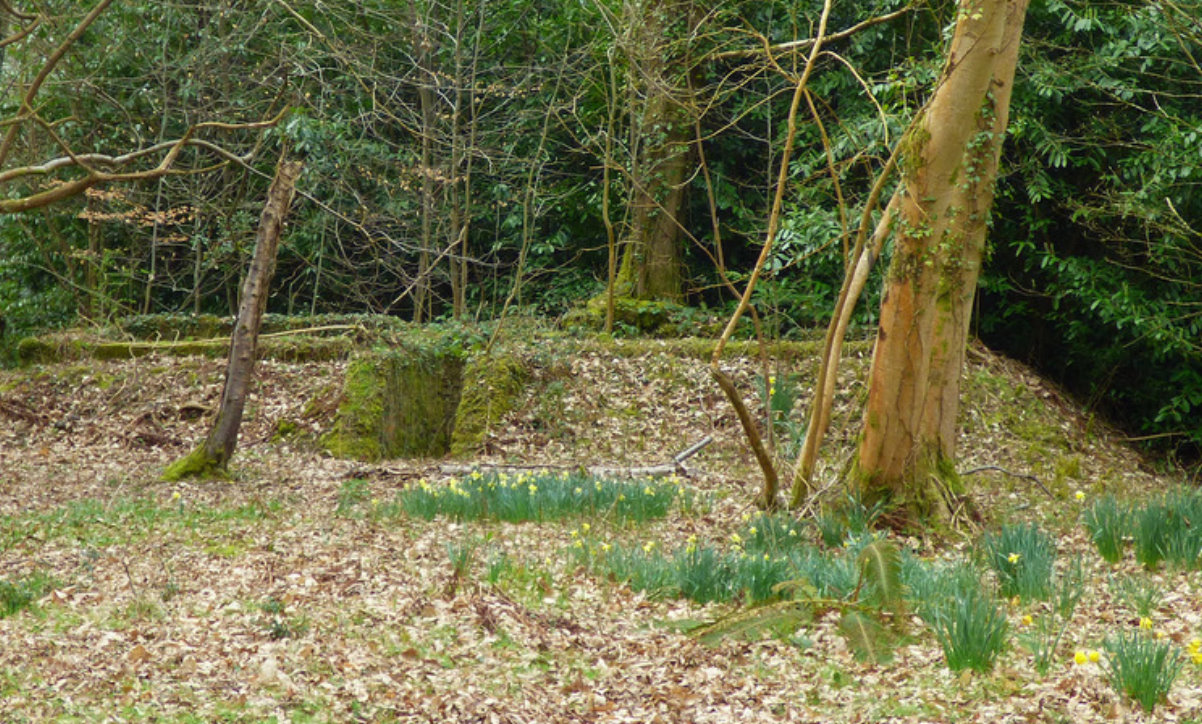

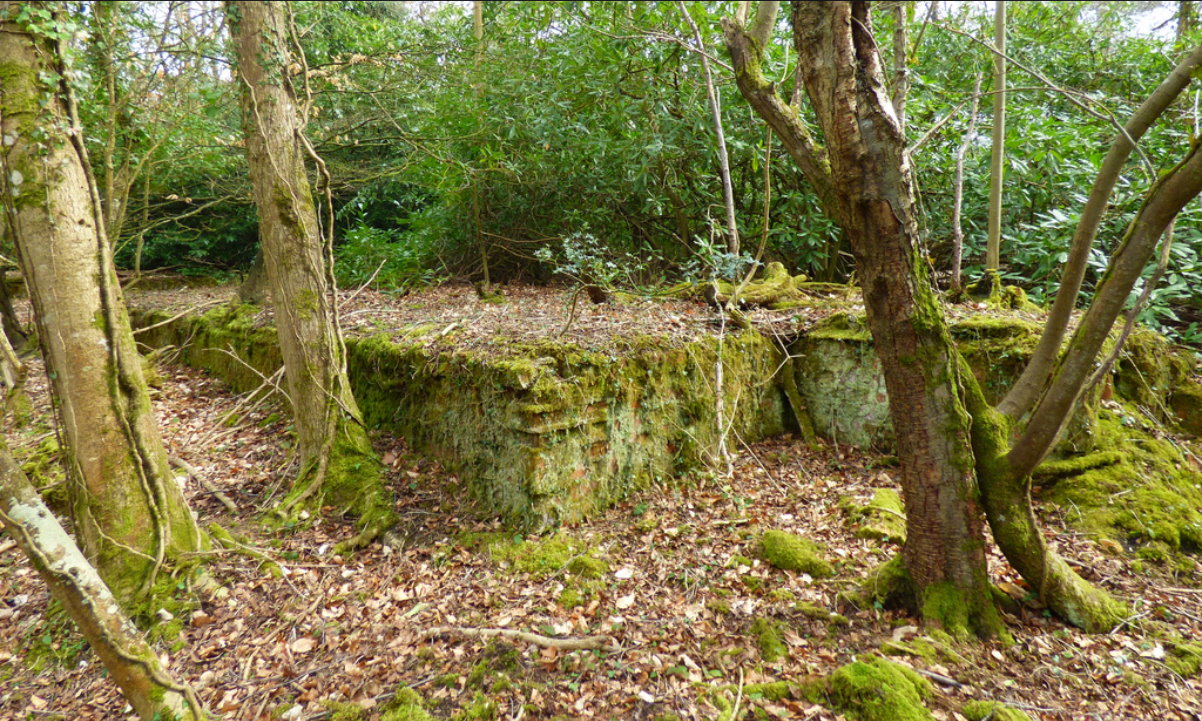
Above of what still remains, a few yards along Harrow Road as at April 2015 which still can been seen in the area of the old W.A.A.F. Number 10 site (Nissen Hut Bases and Blast Shelters) just by looking over the fence. You can also just see where the old entrance was, which when used, was known as Harrow Crescent.
Eventually, in the late 1960s, The New Forest area of responsibility the runways were removed, and the land returning to forest/heath land. Not though on the privately owned land.
Such a shame in my view, as a small part of our important local heritage and social history that lasted for over 15 years that a small area could not be put in place to step back in time to show the public of today what life was like post war.
If any of you recall living at Holmsley South during this period, please do contact me. Adge
